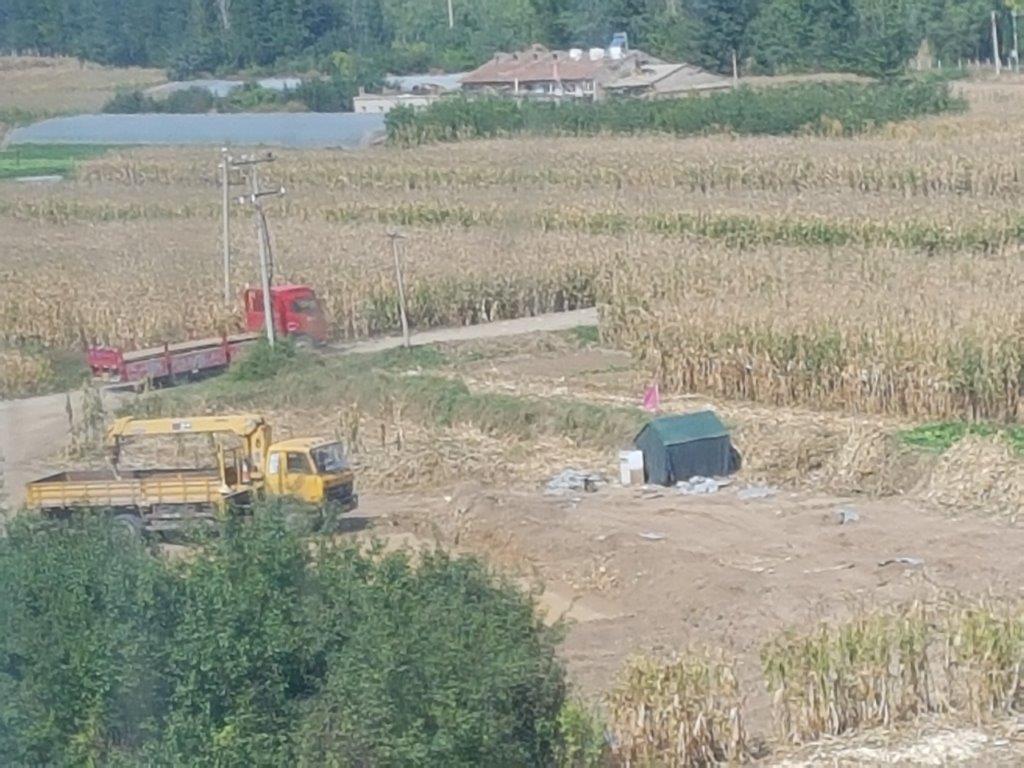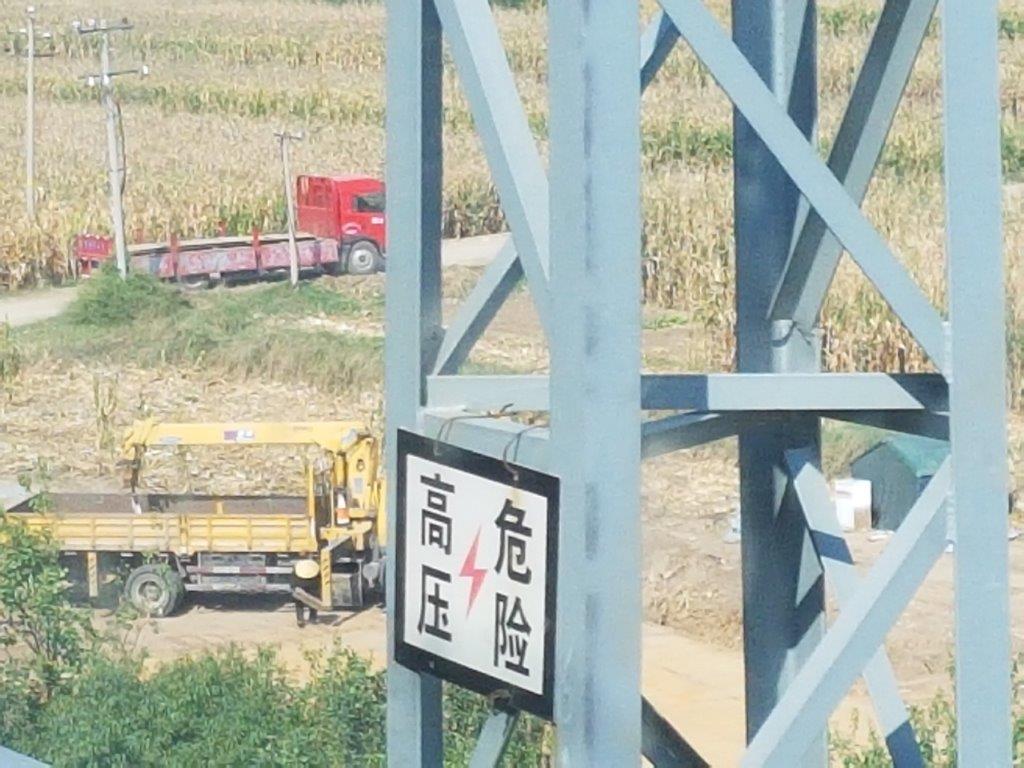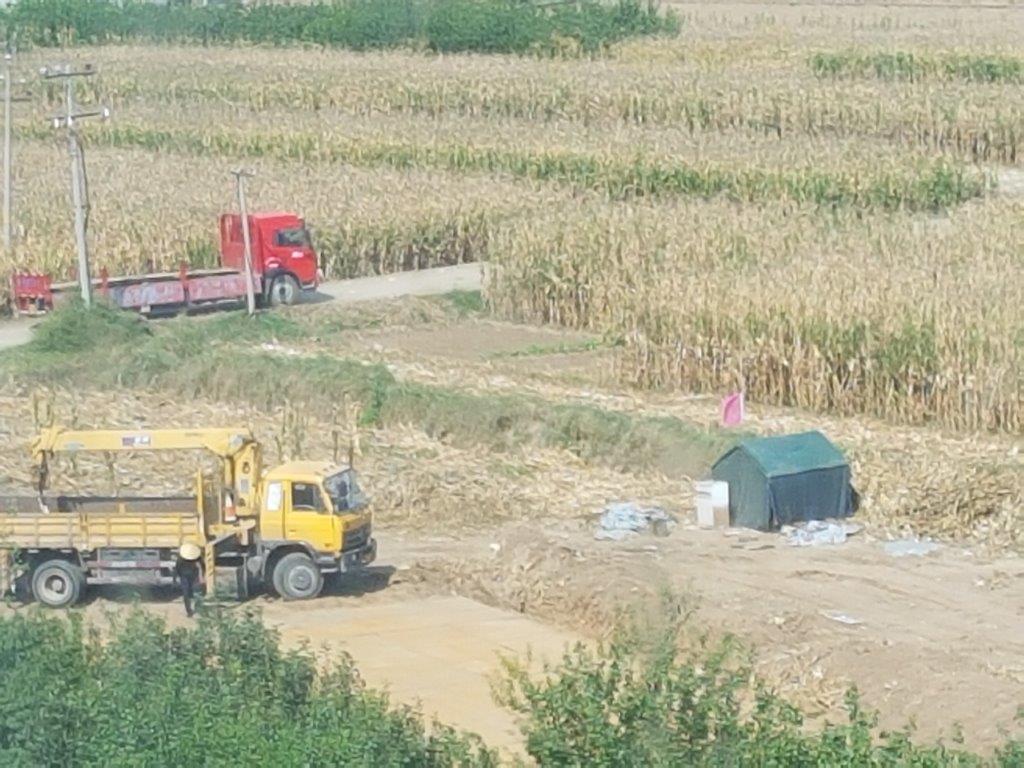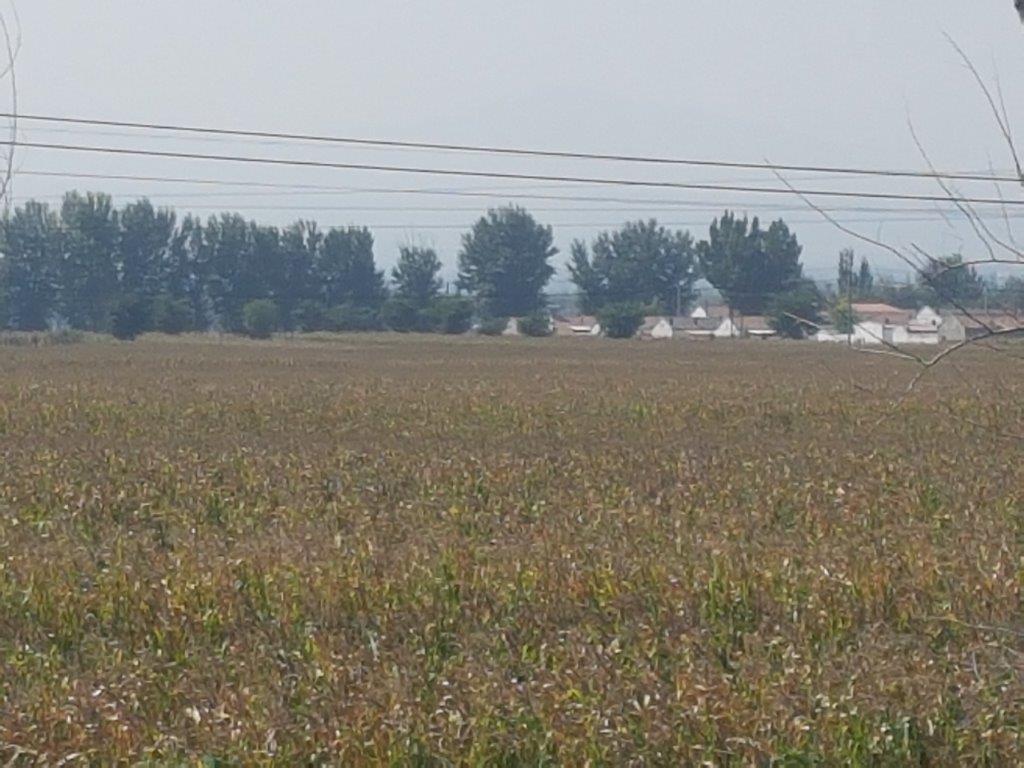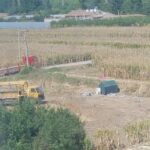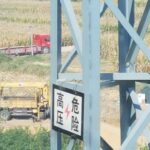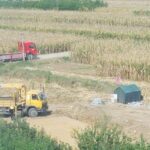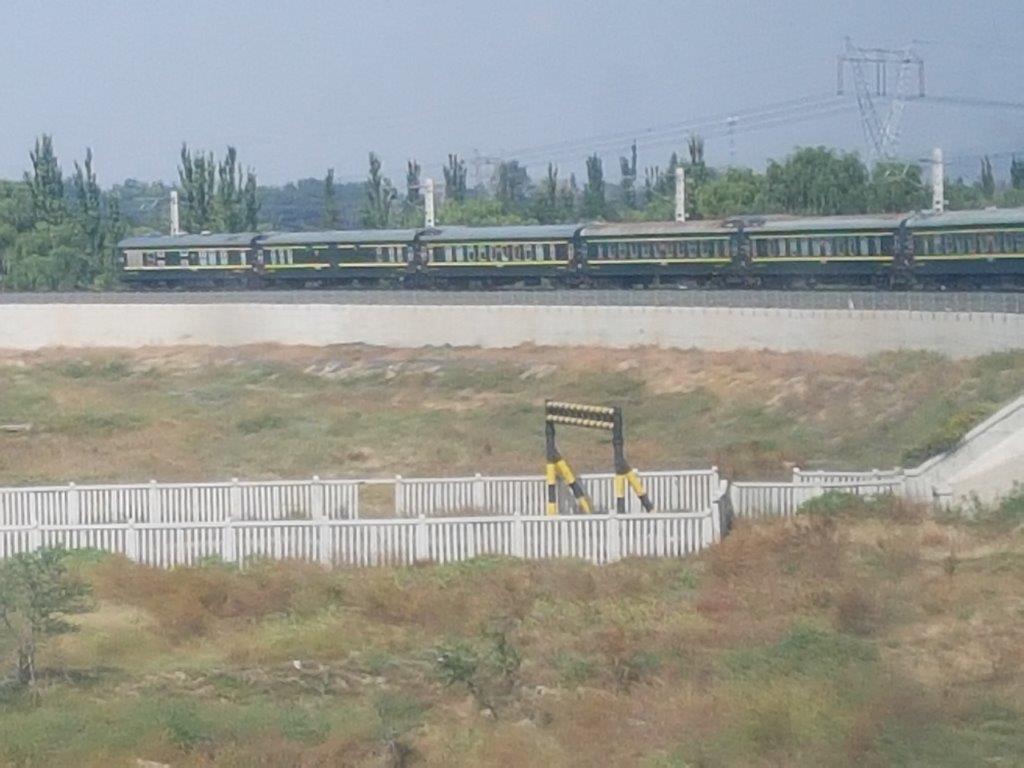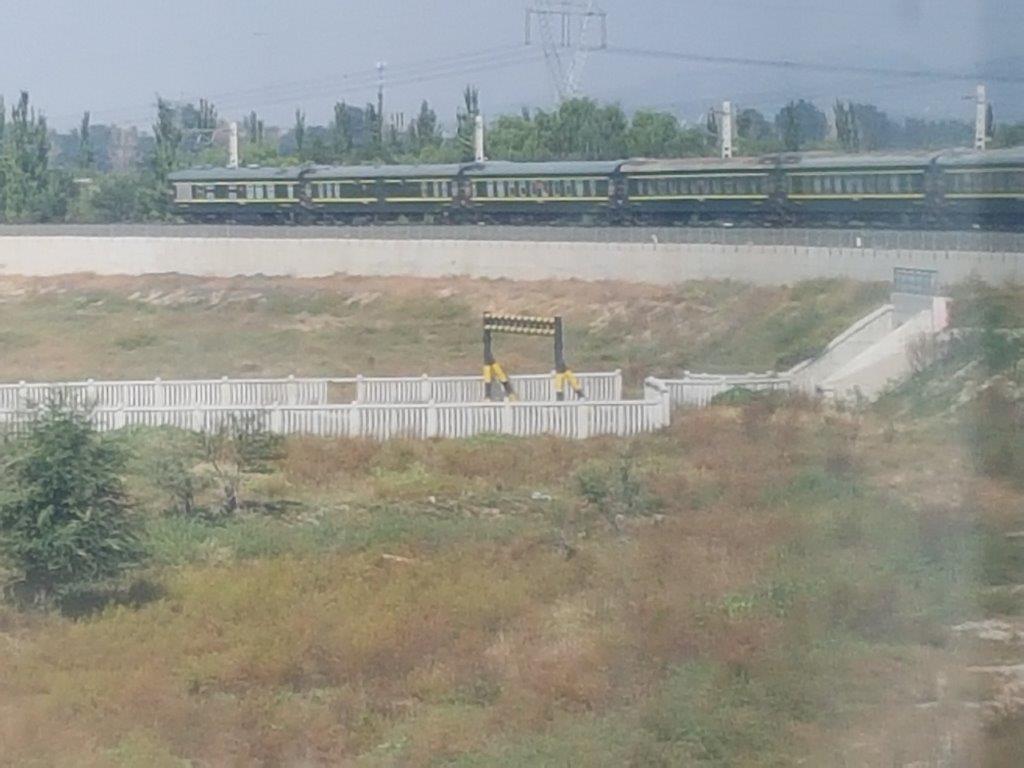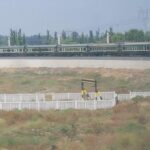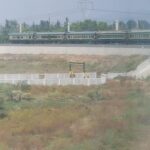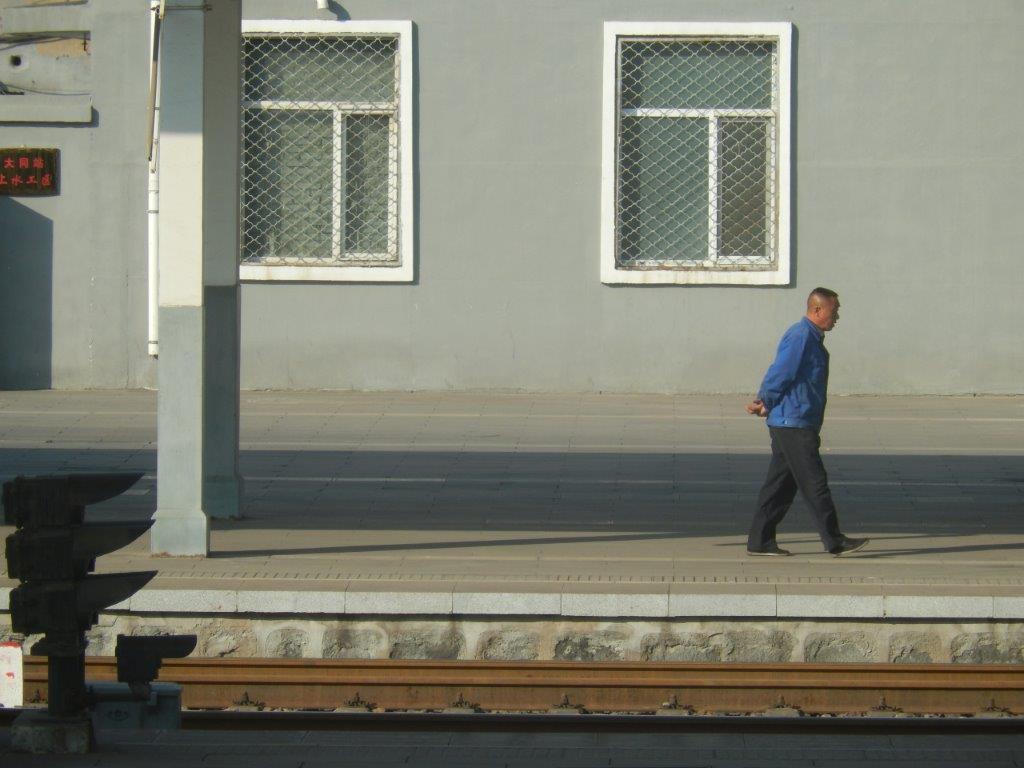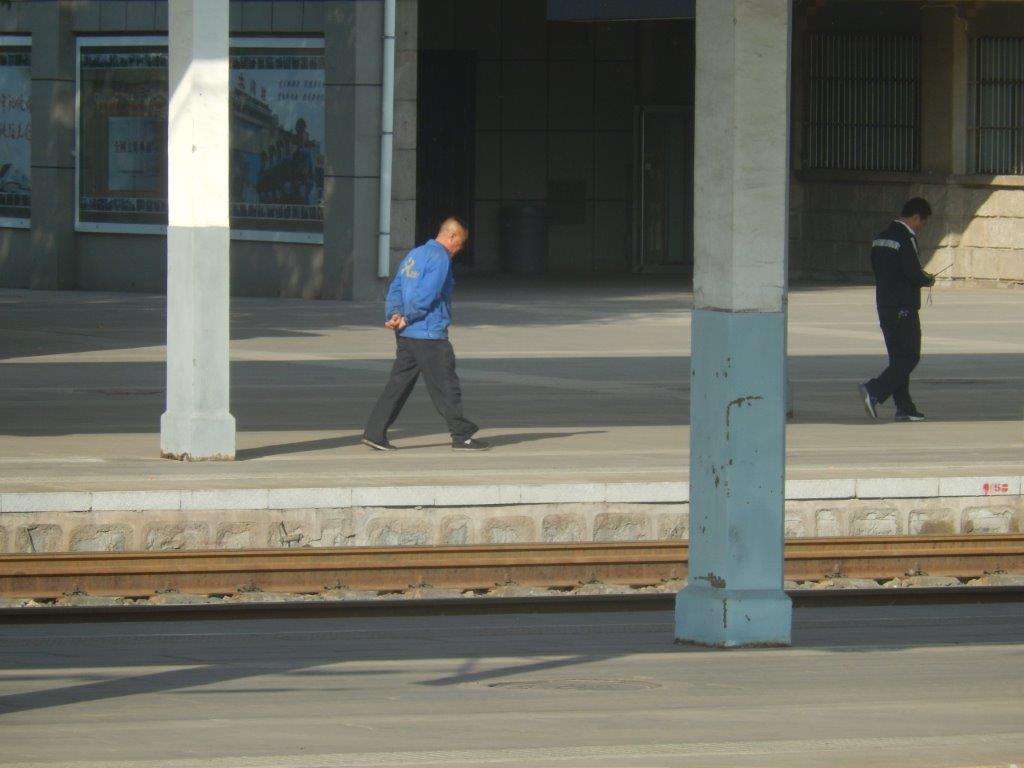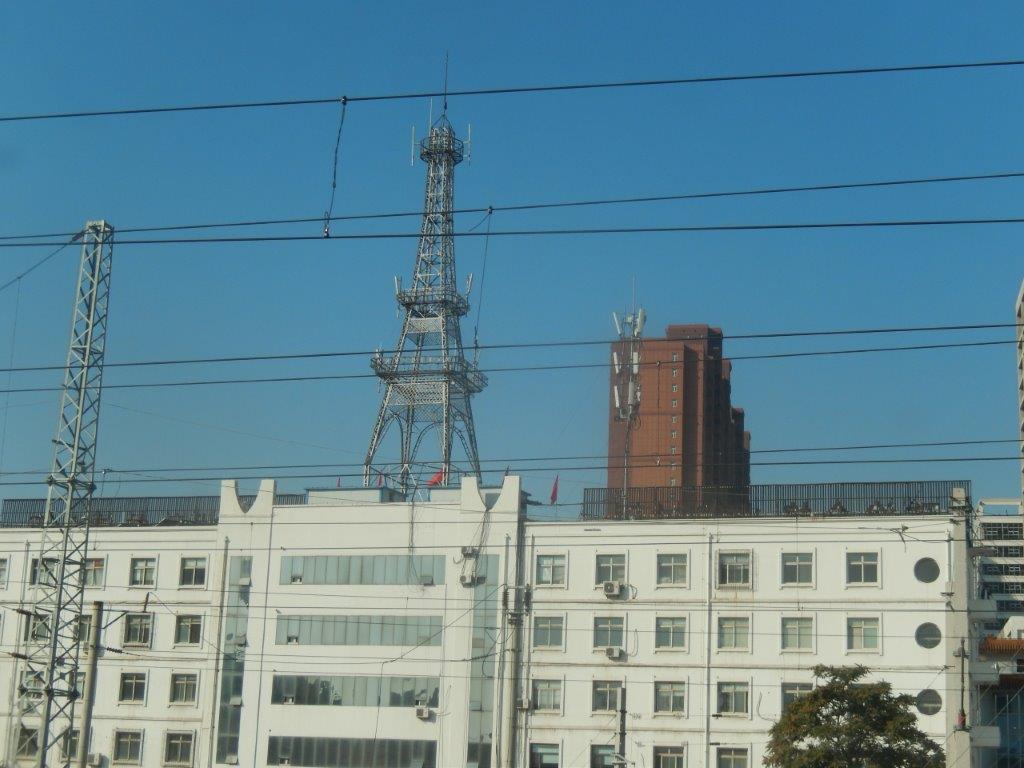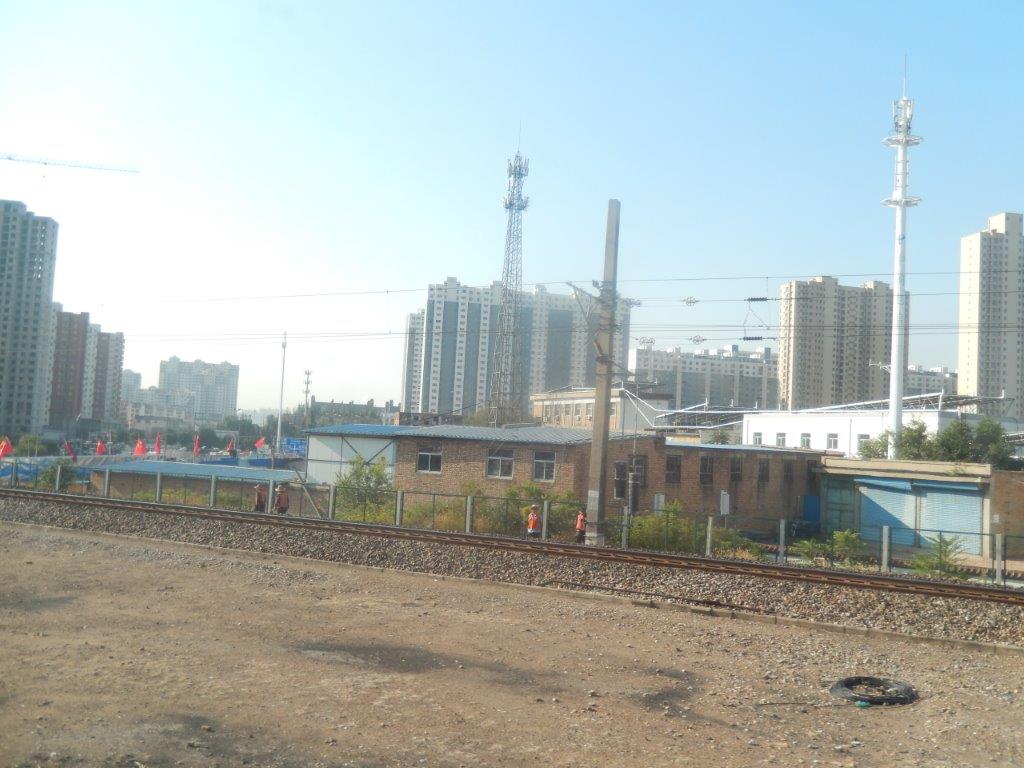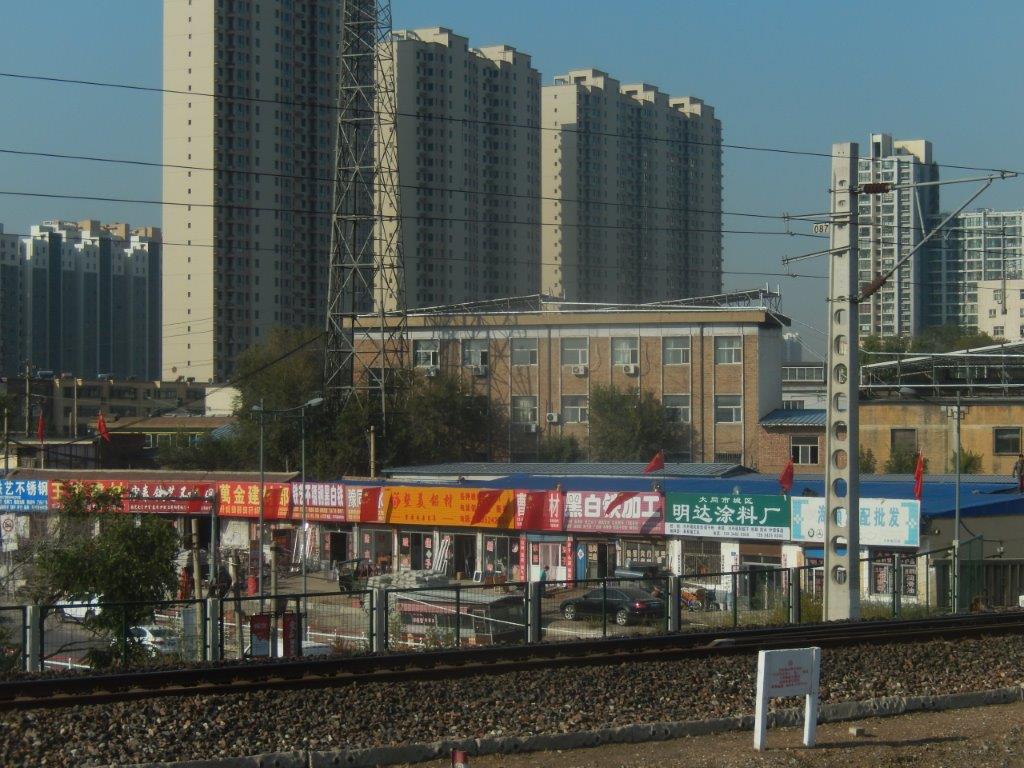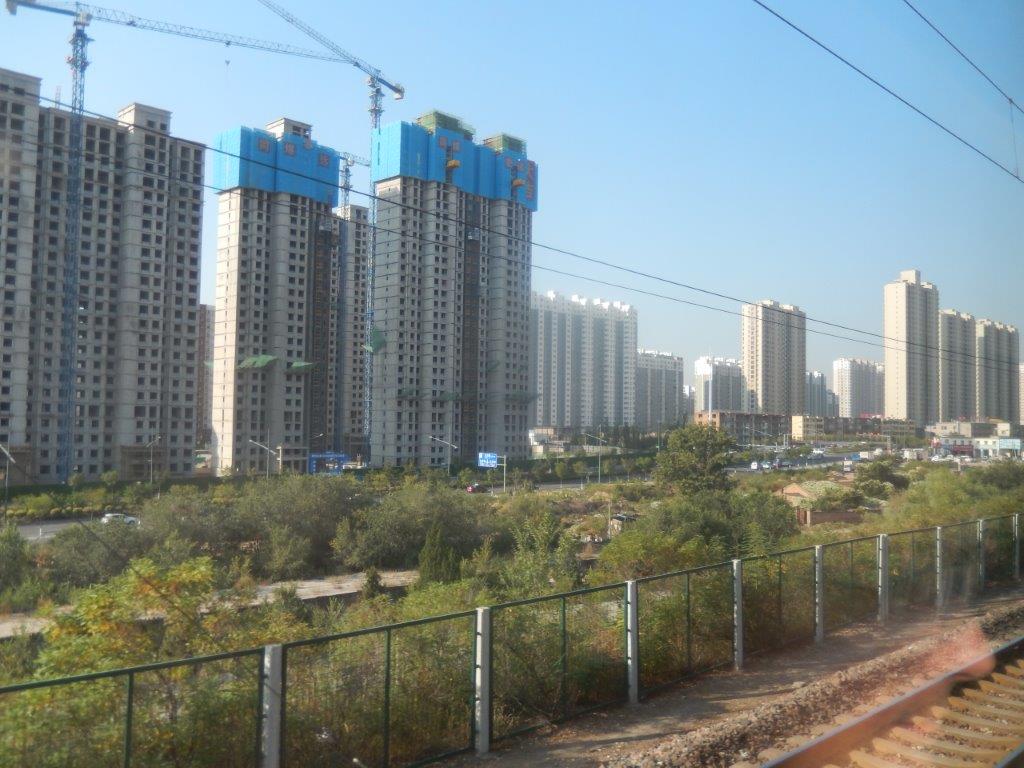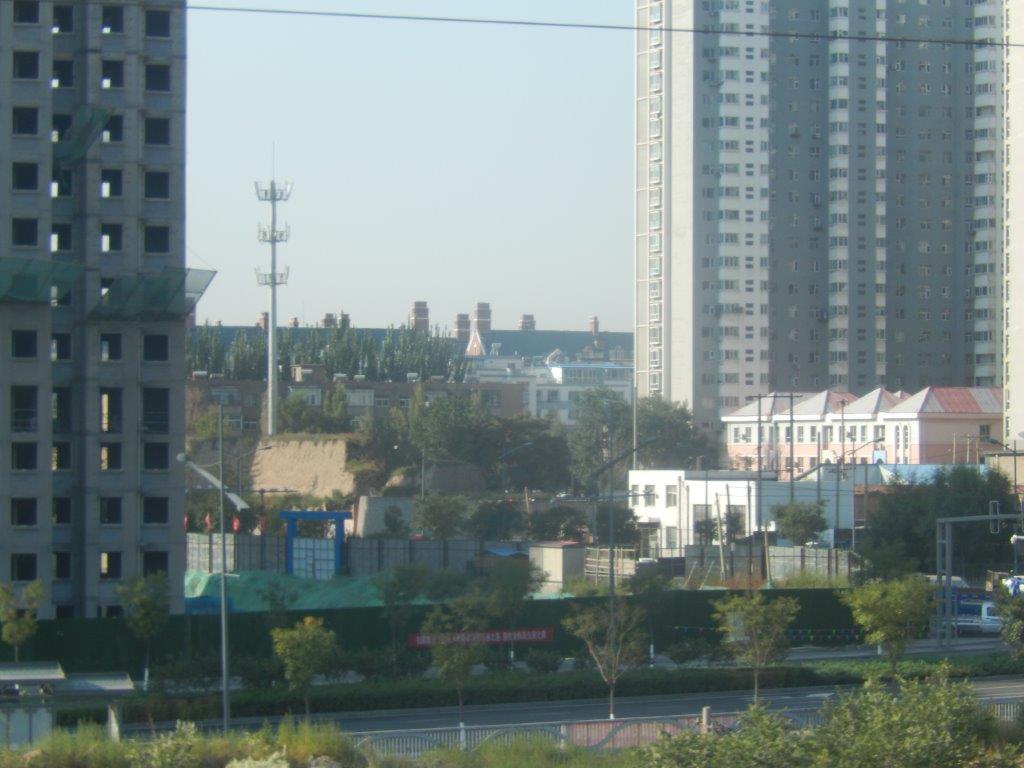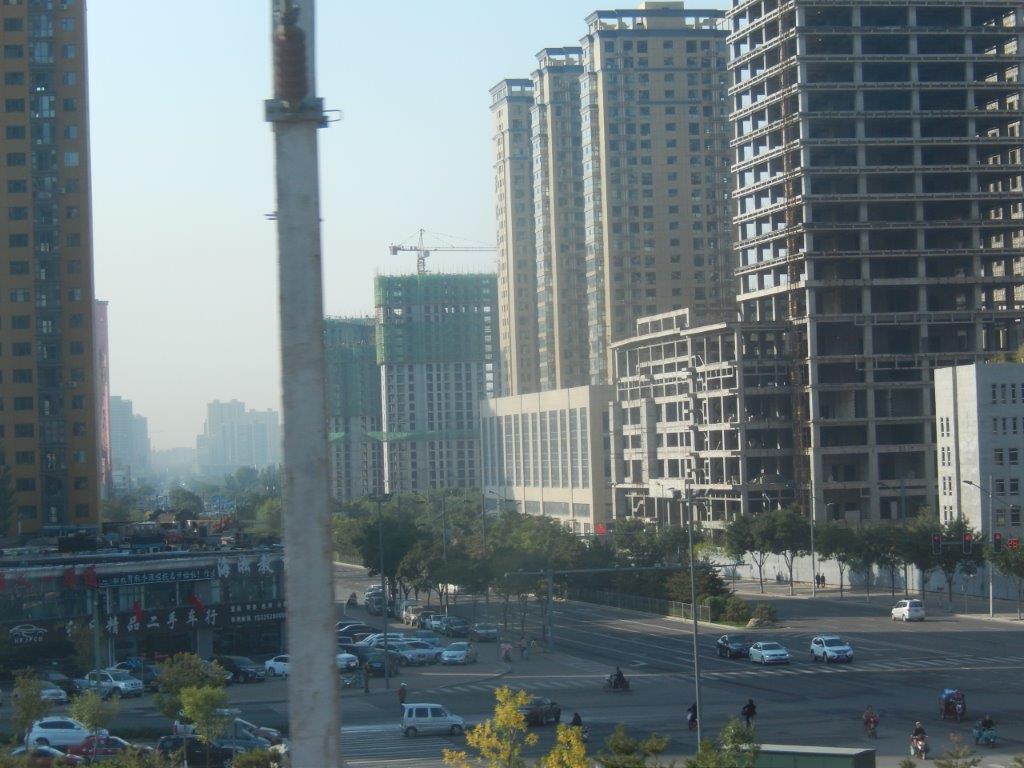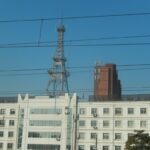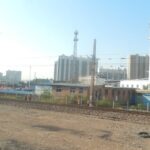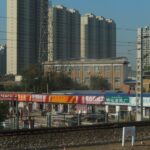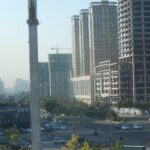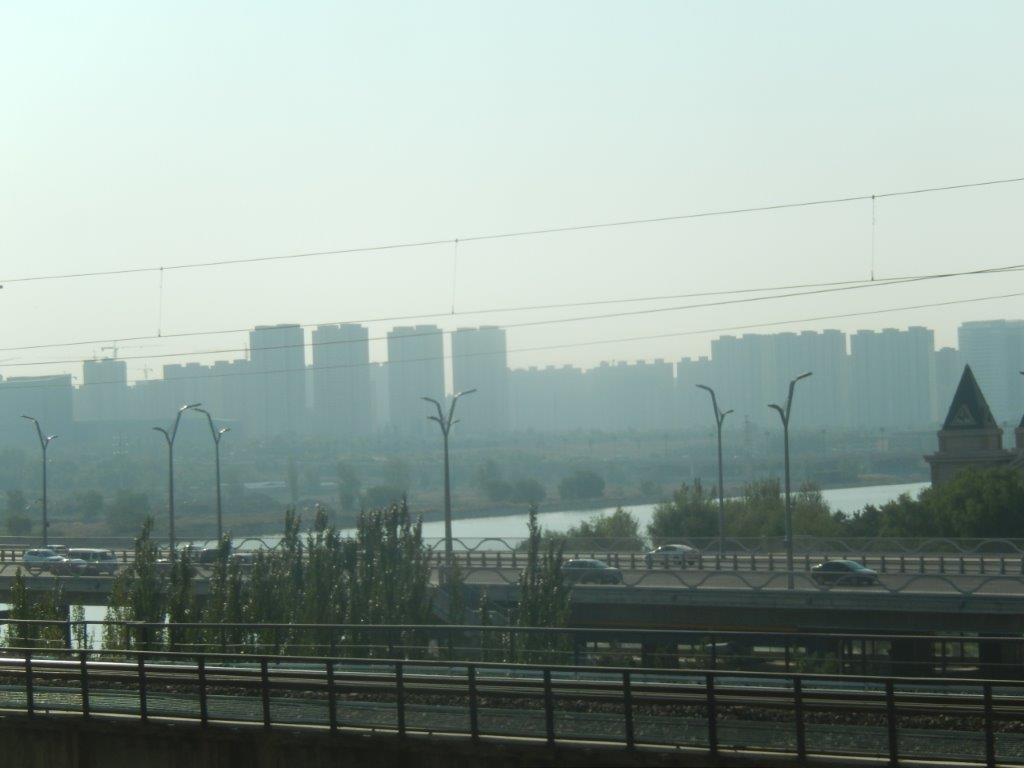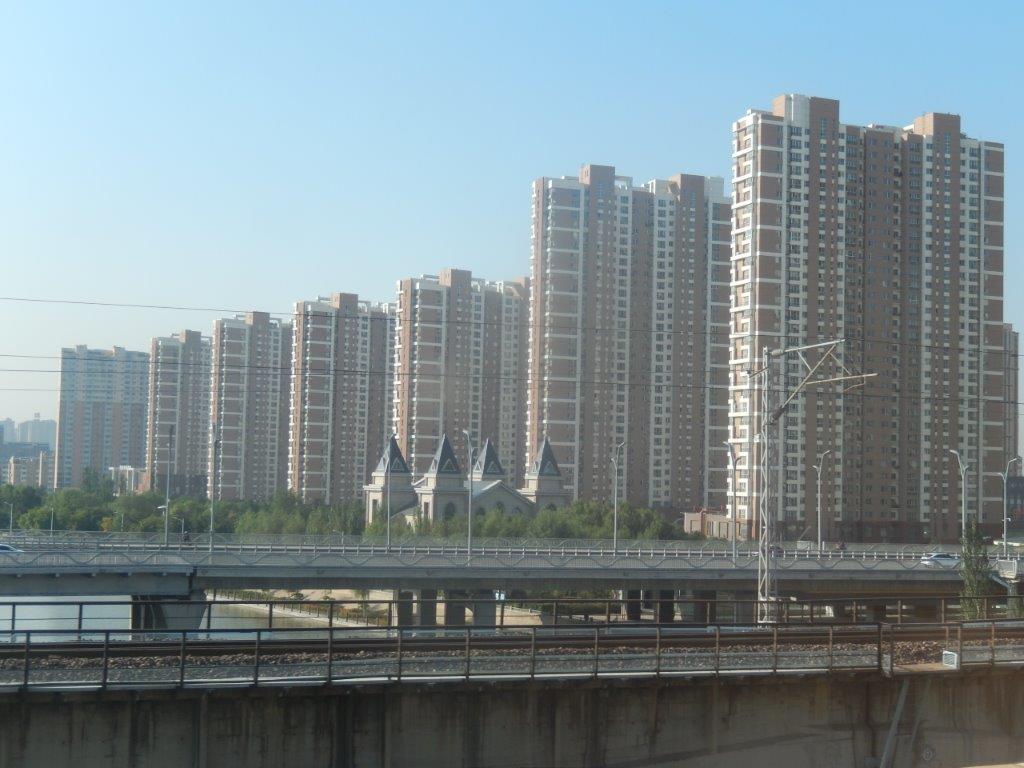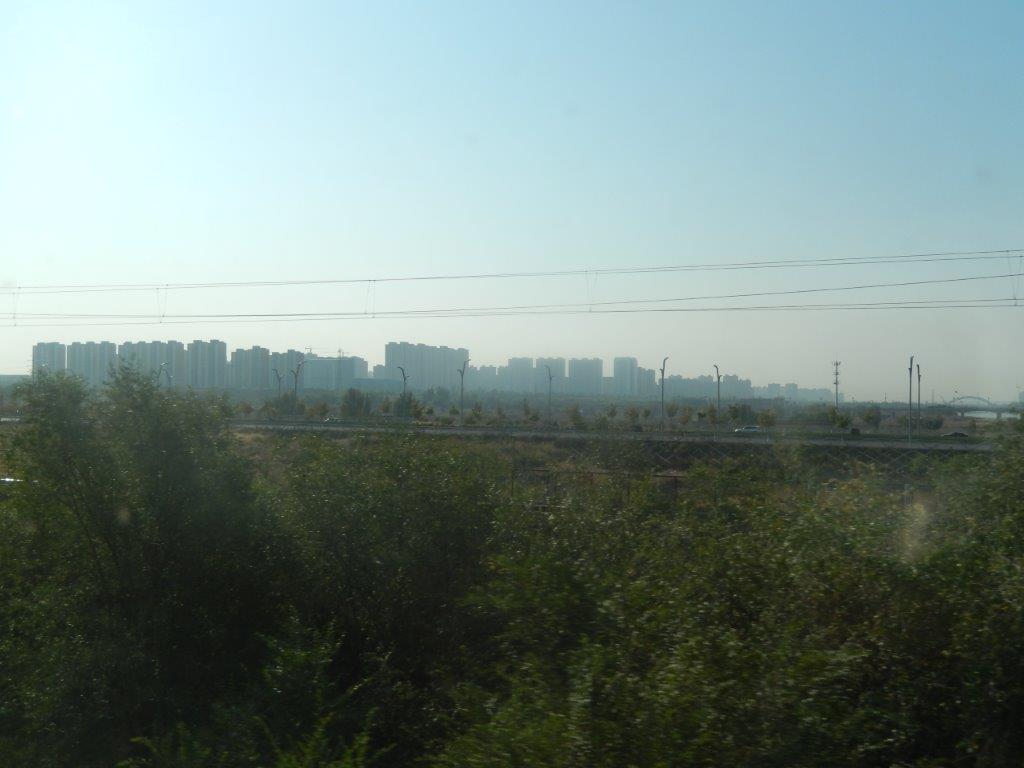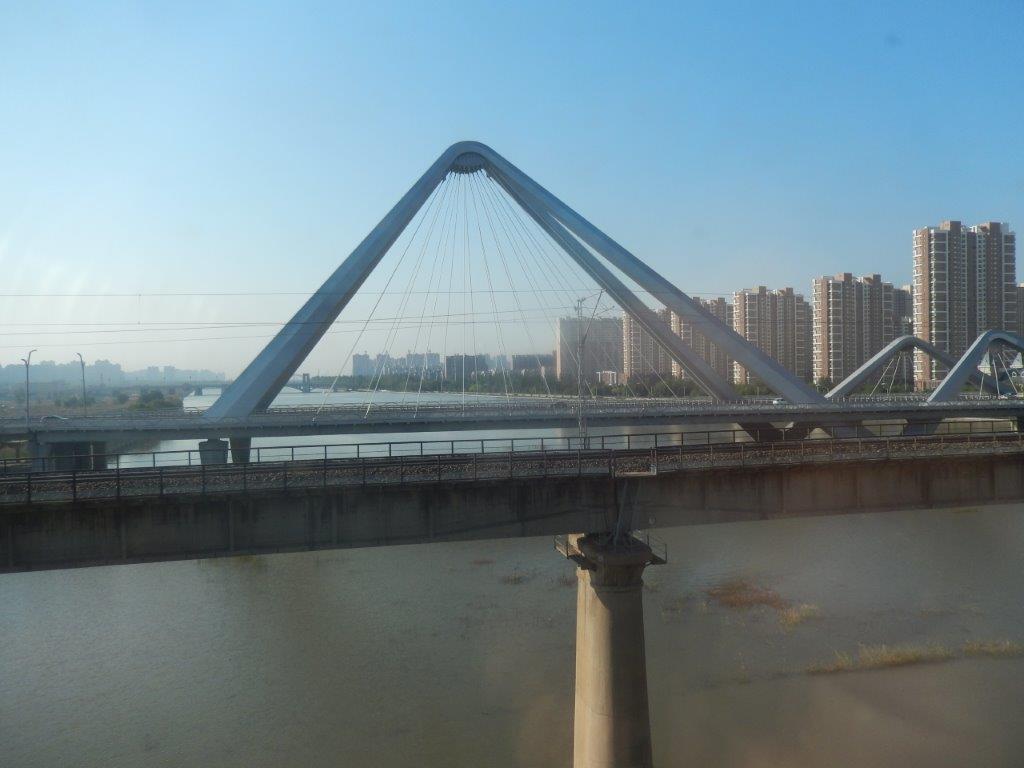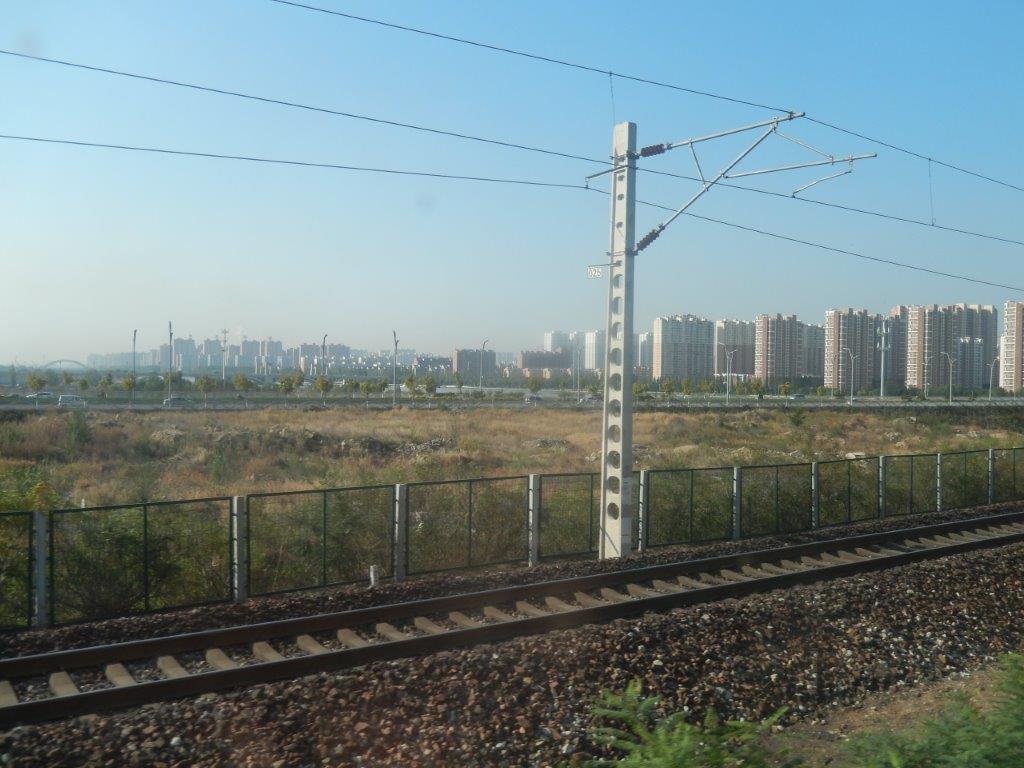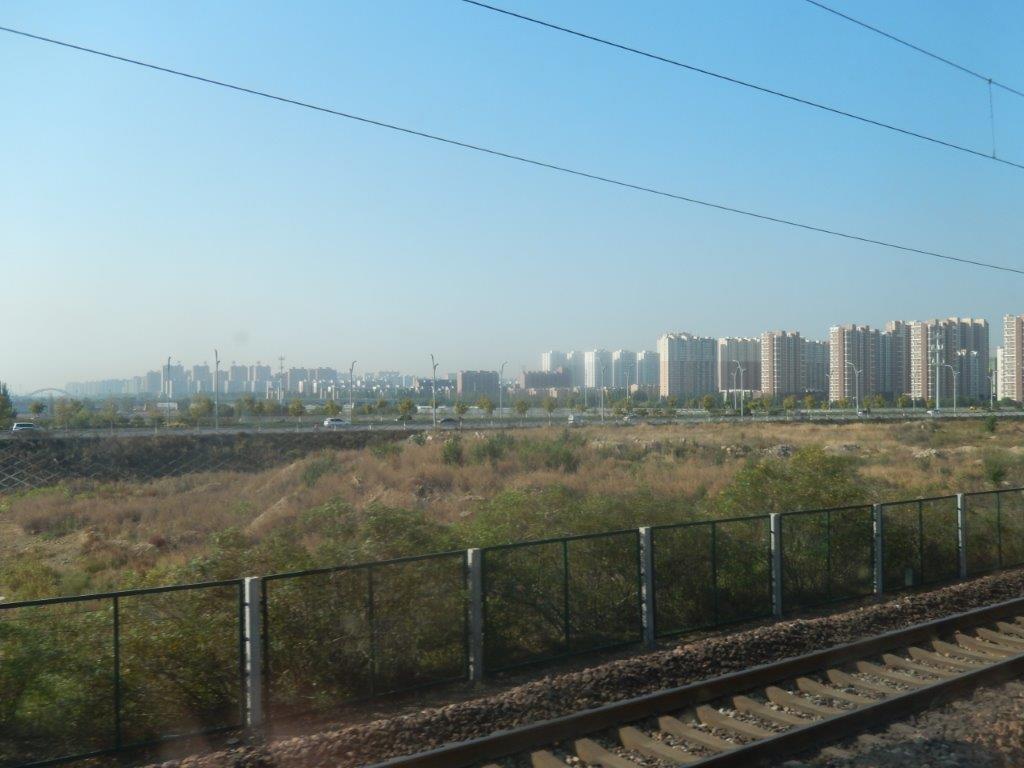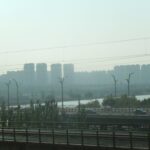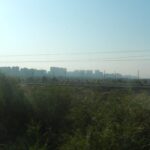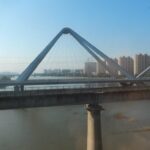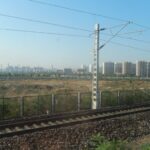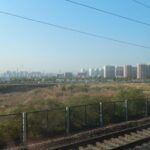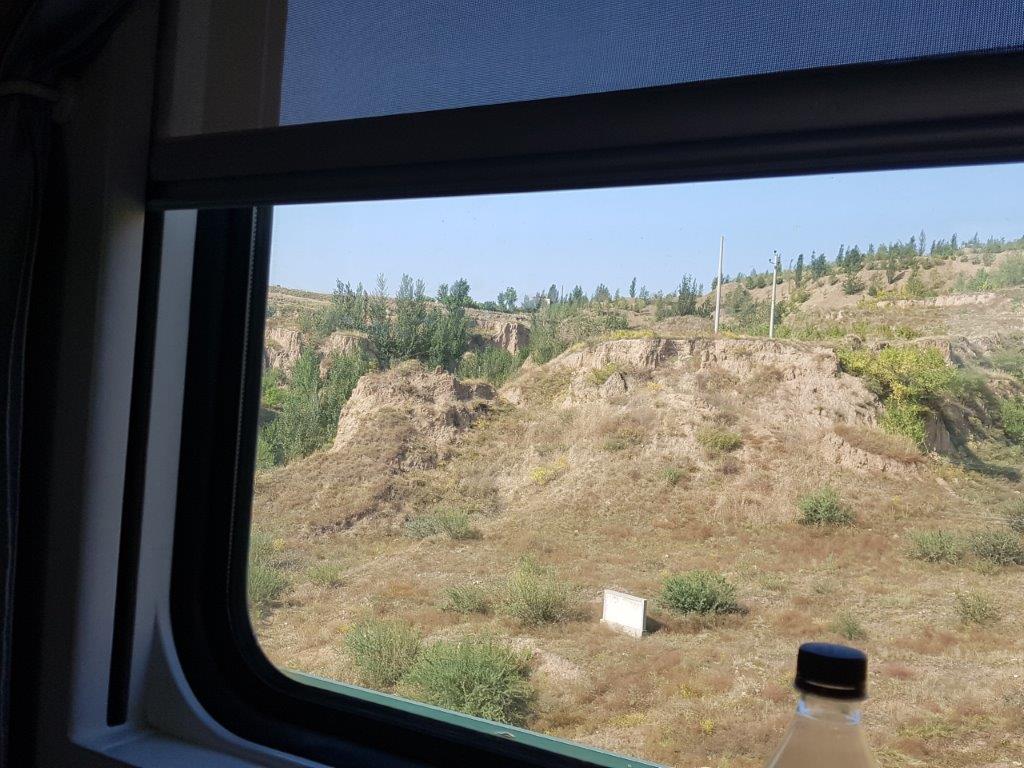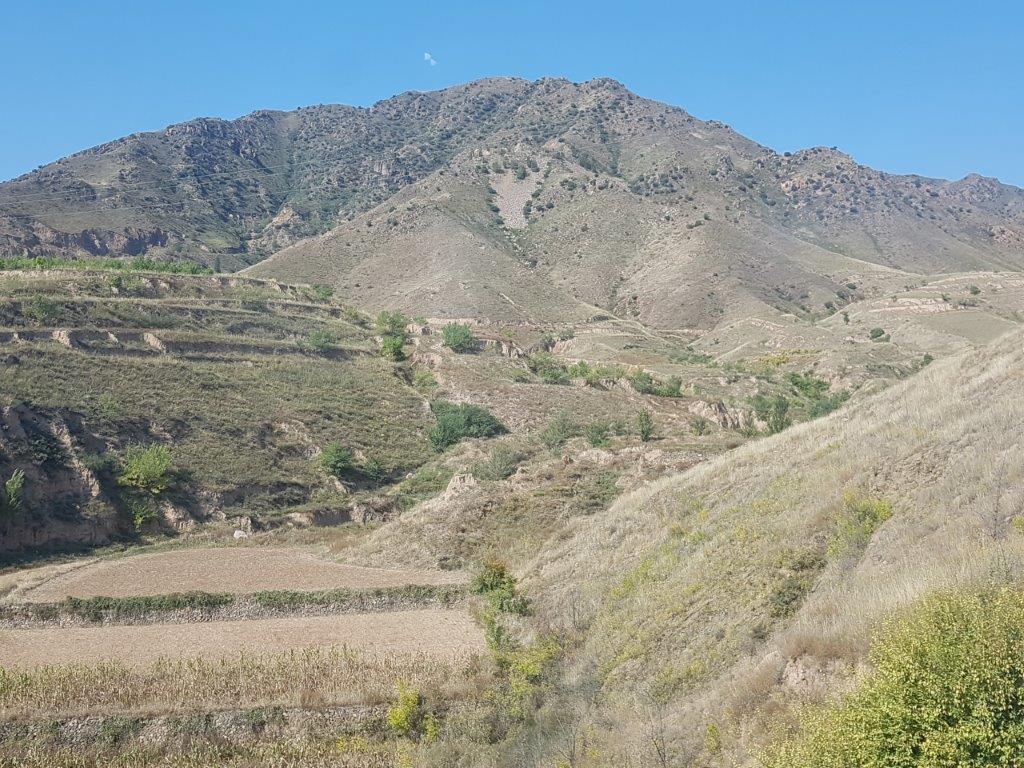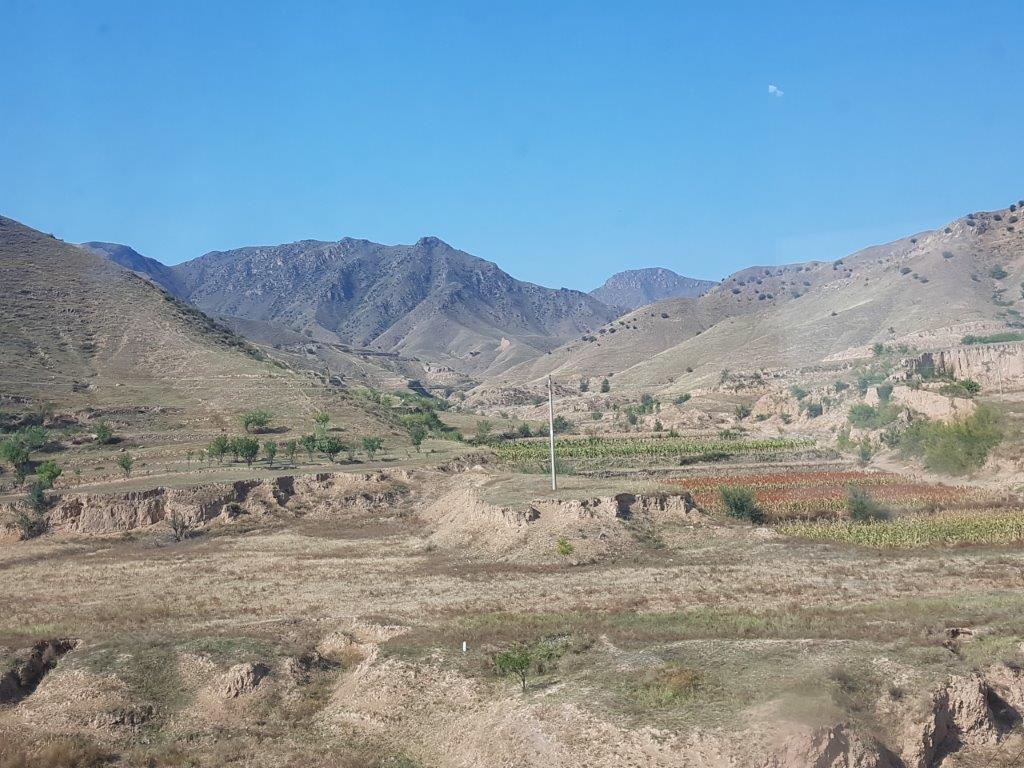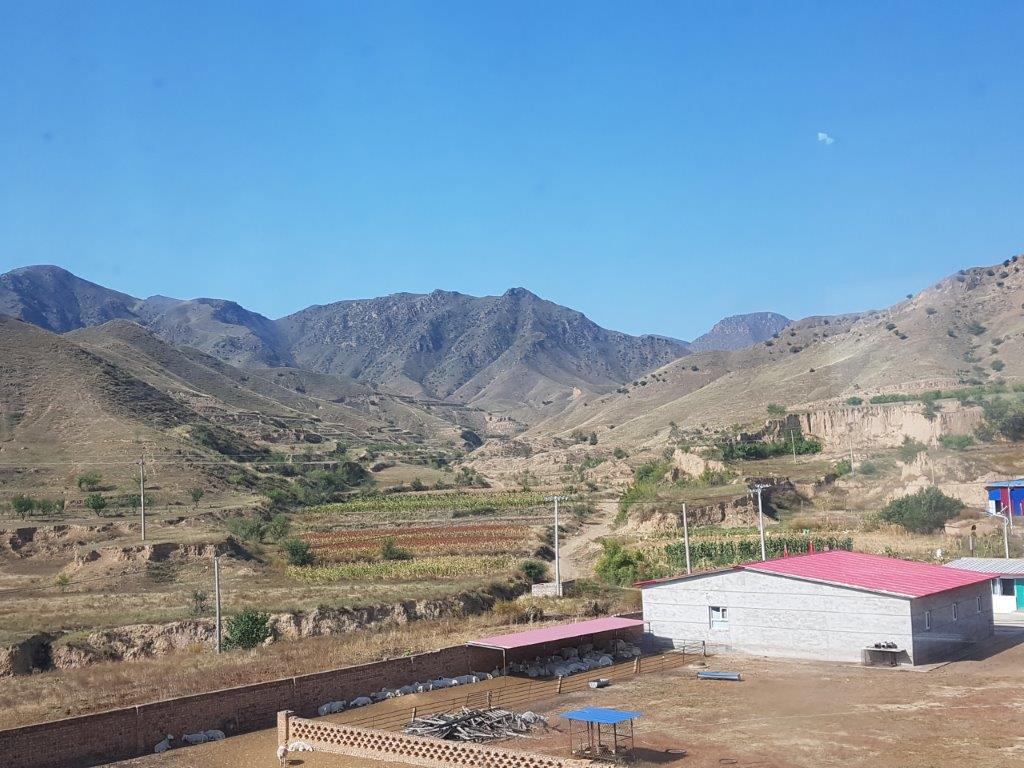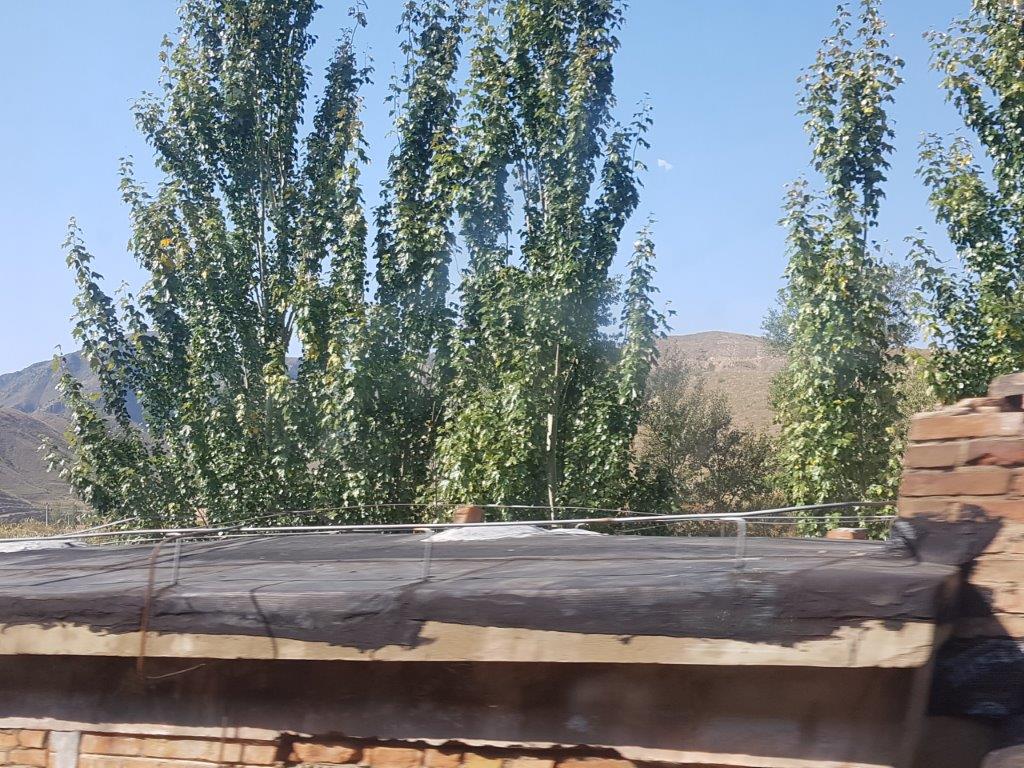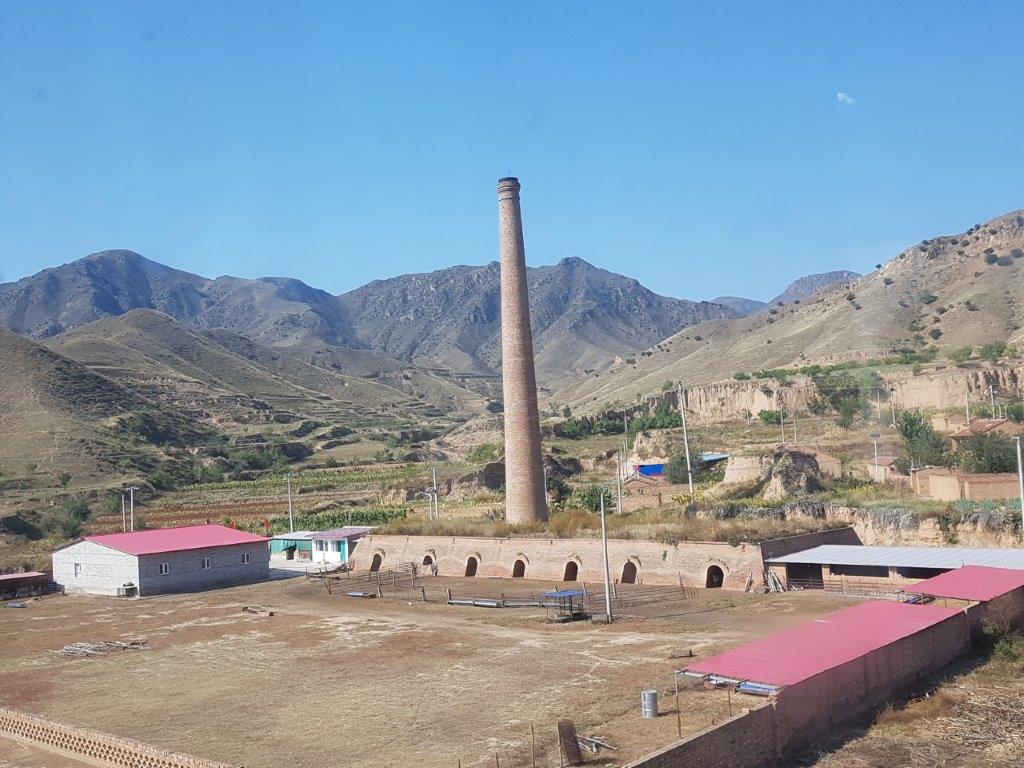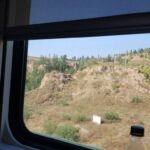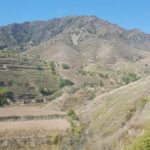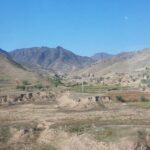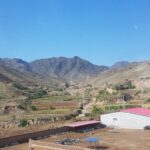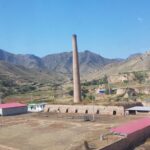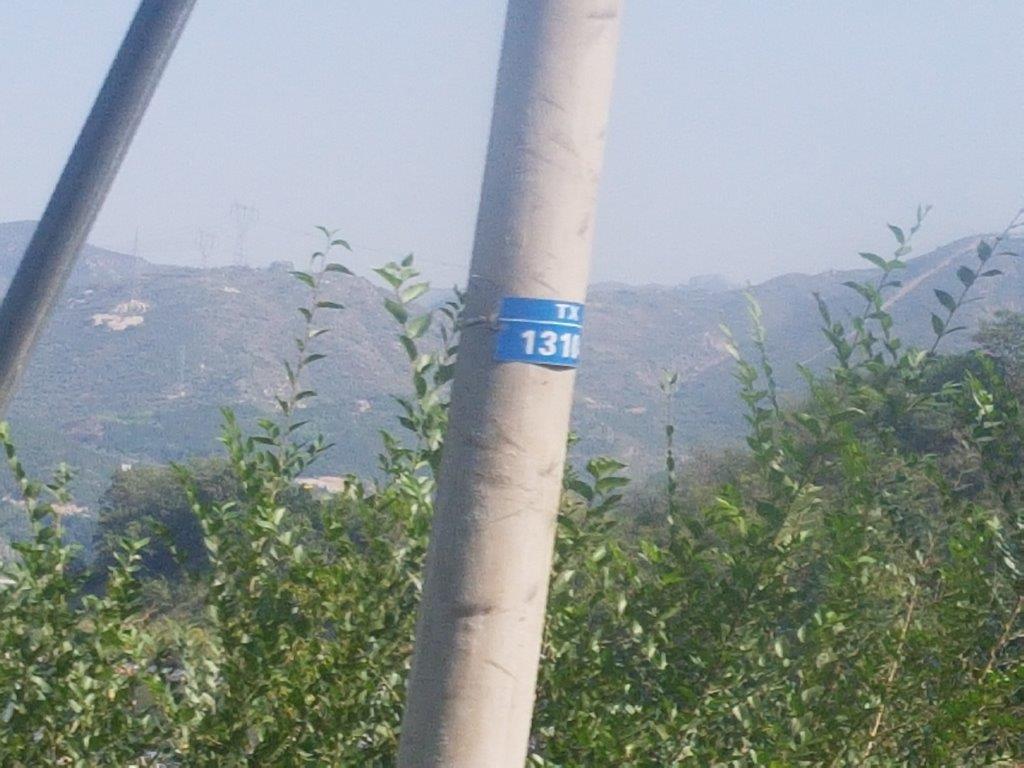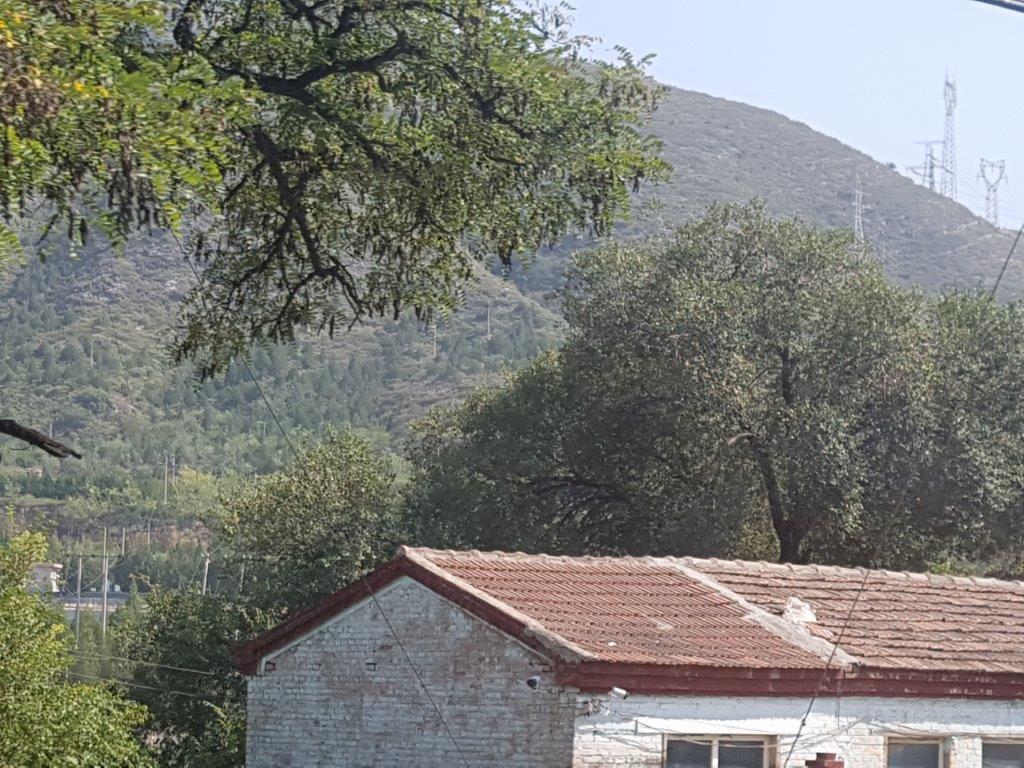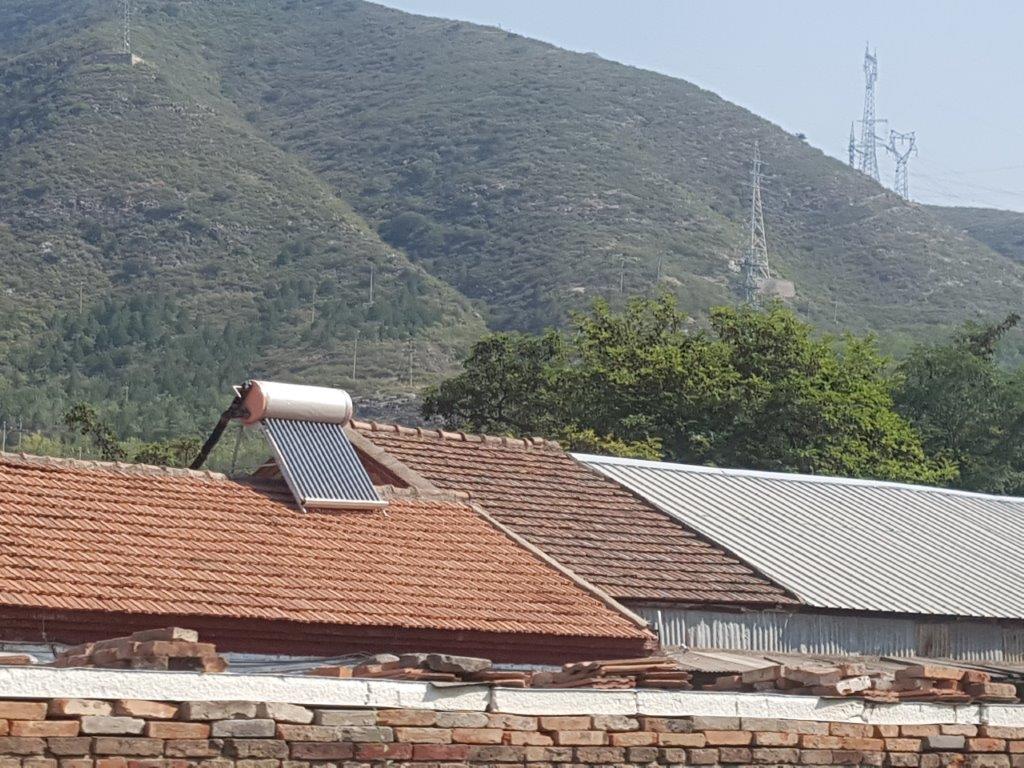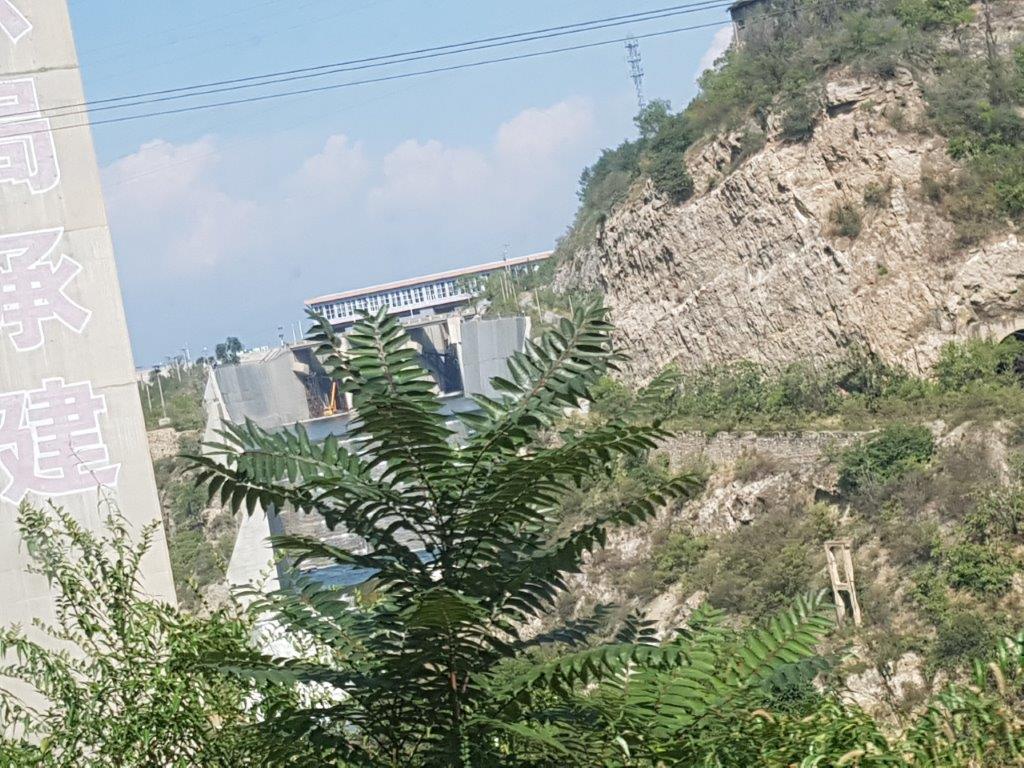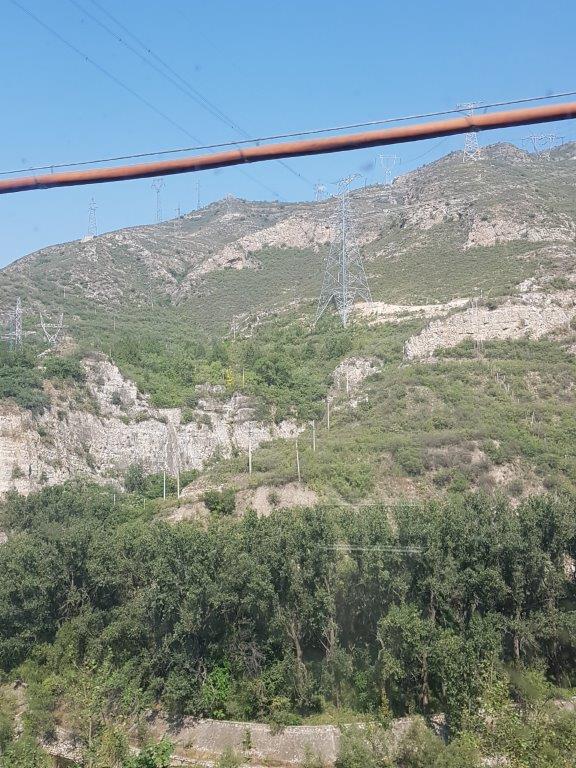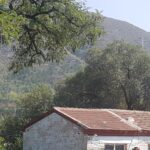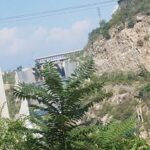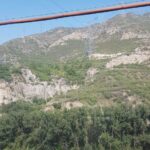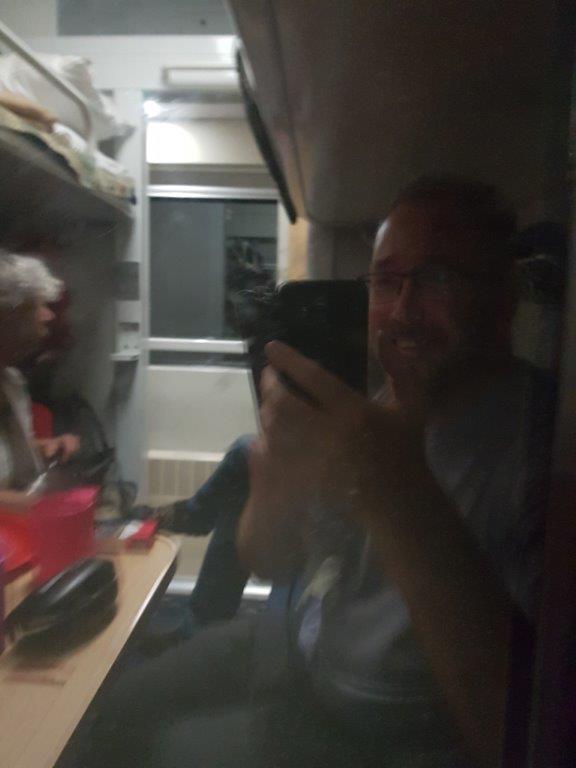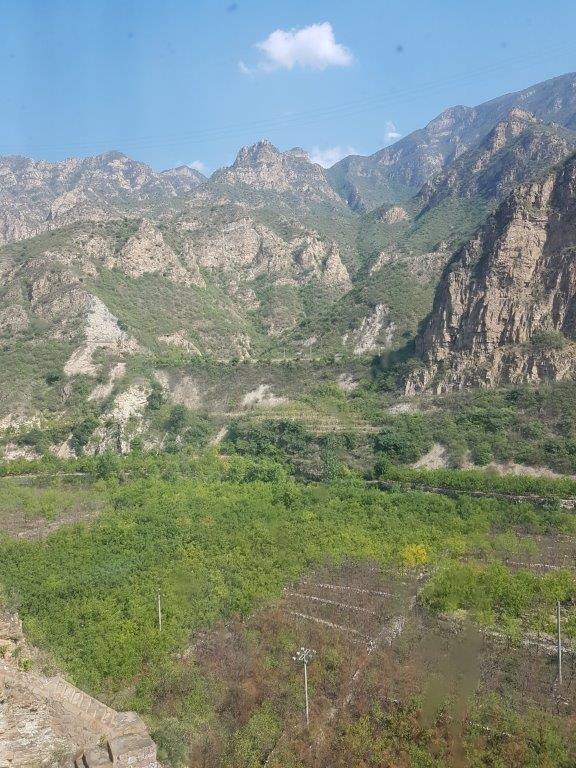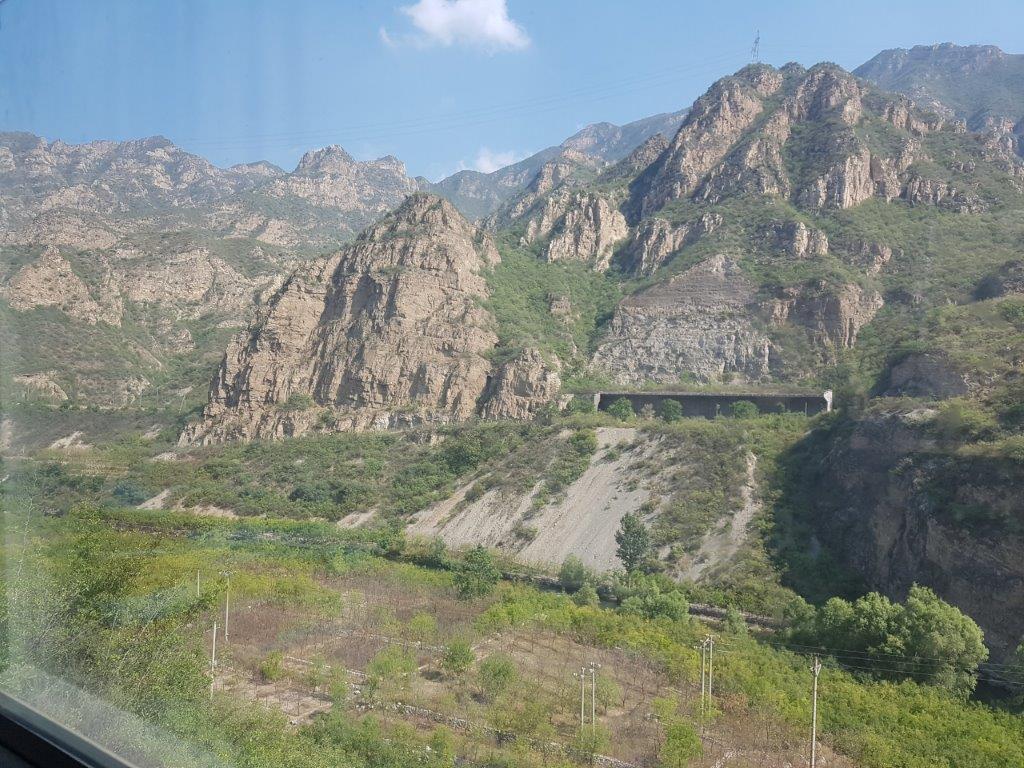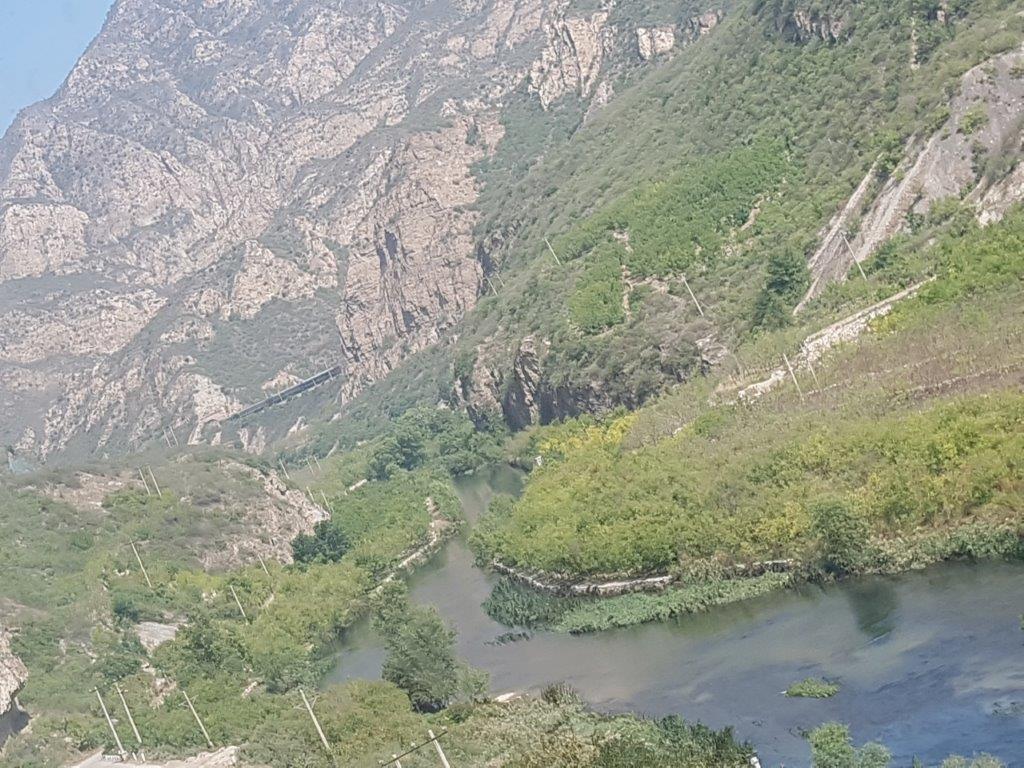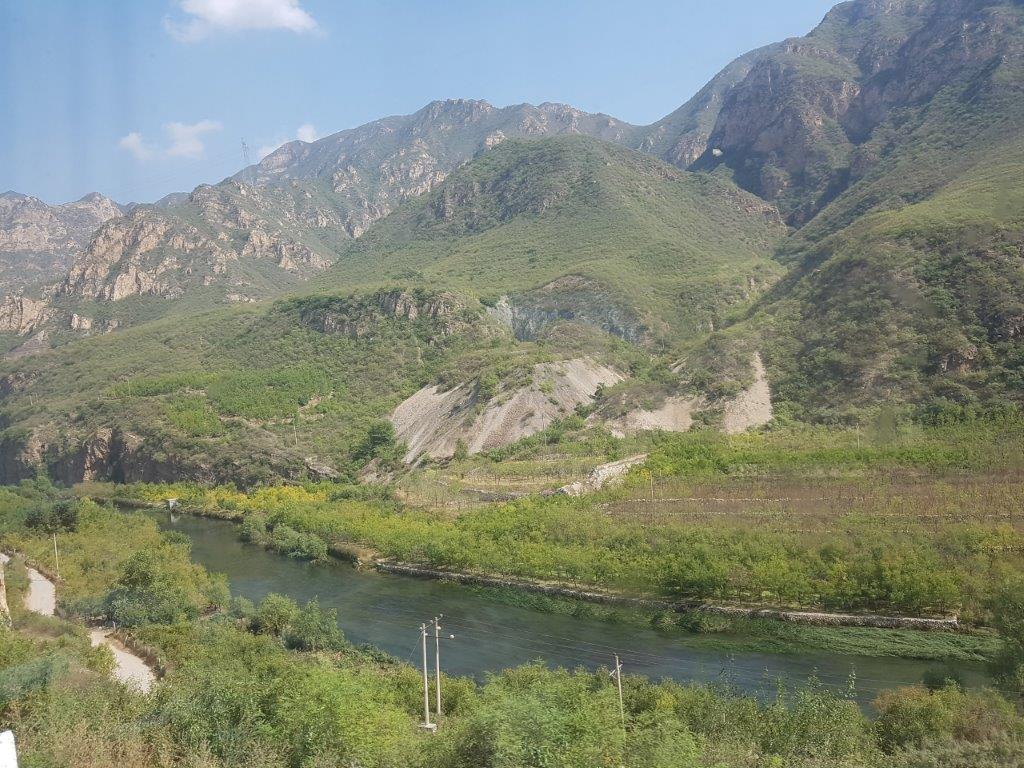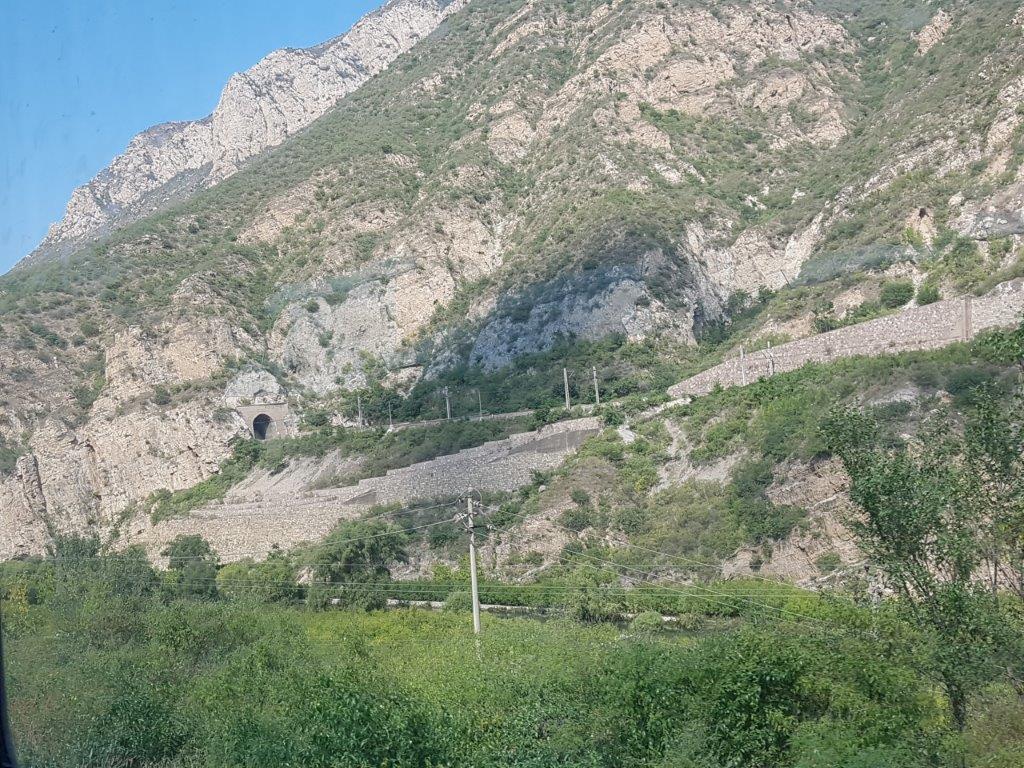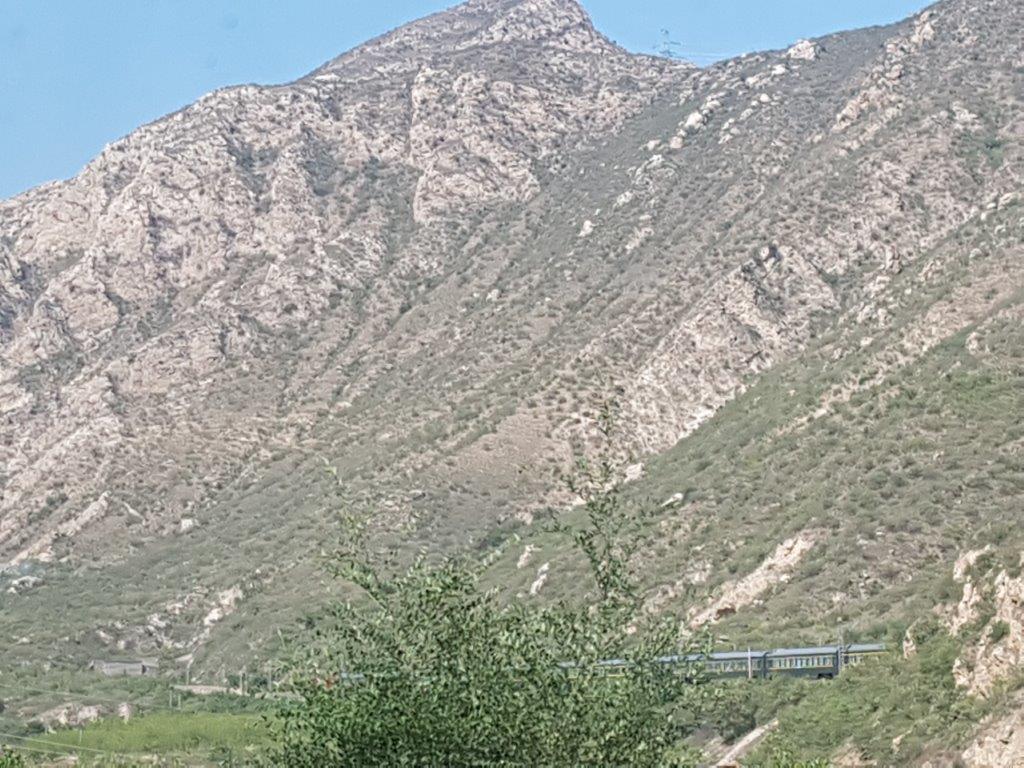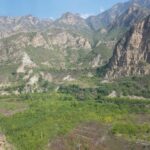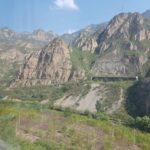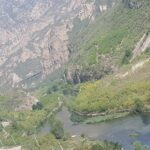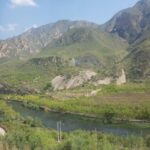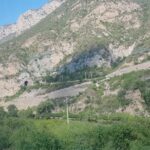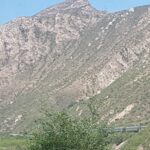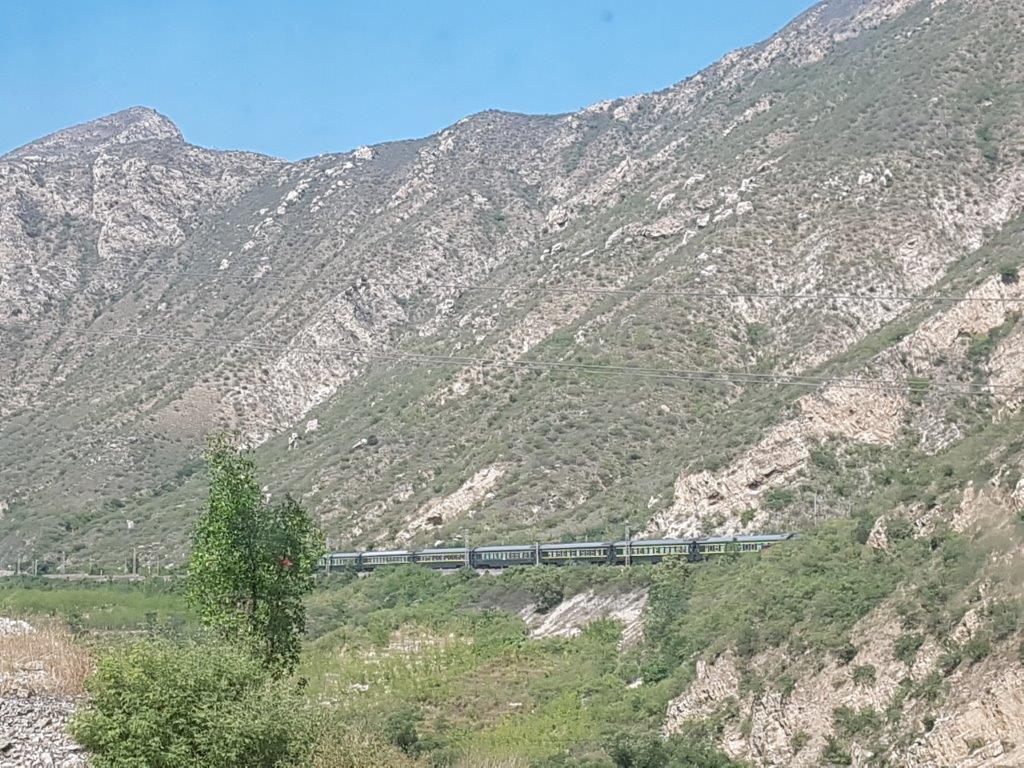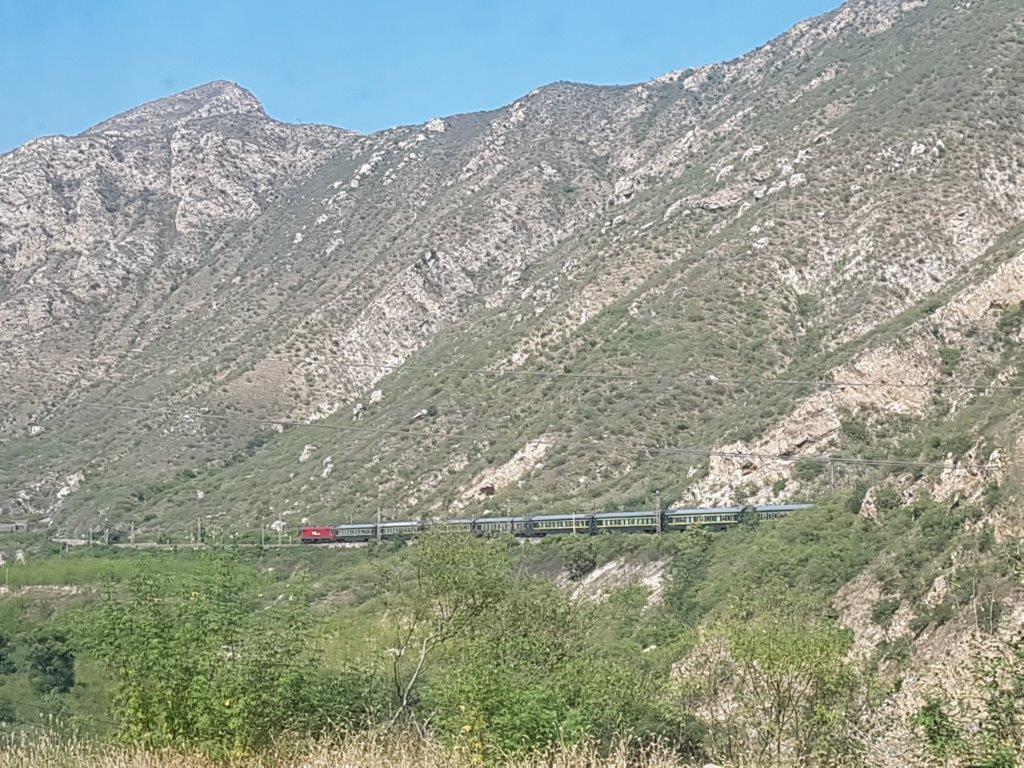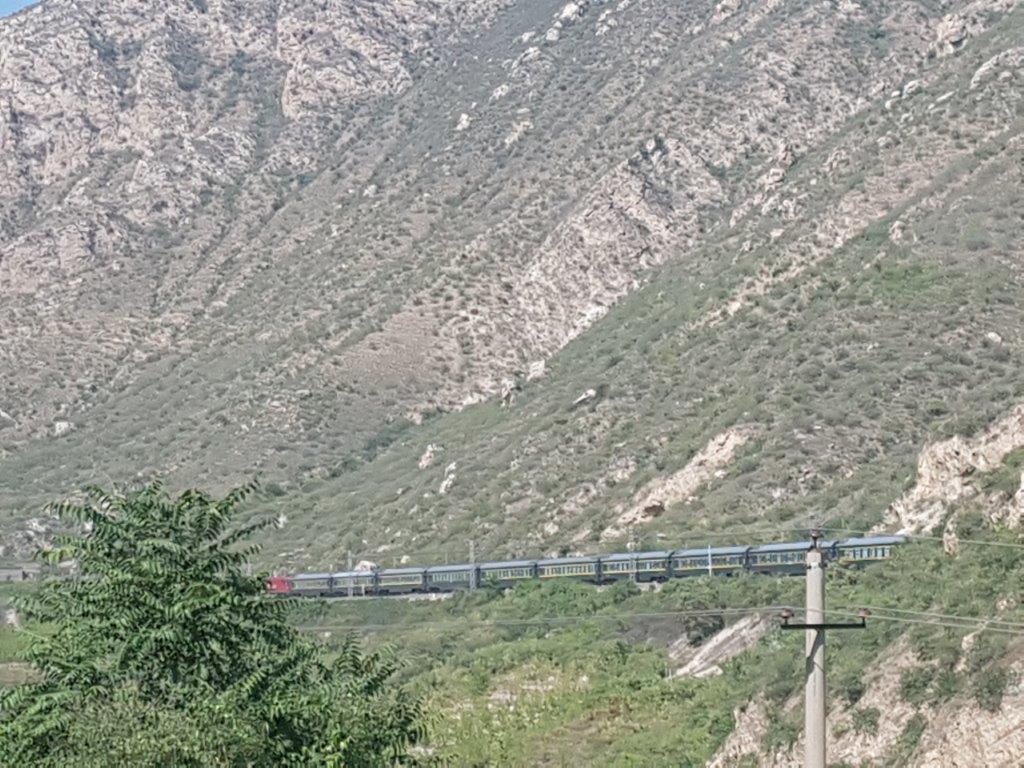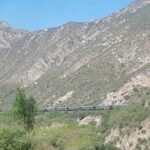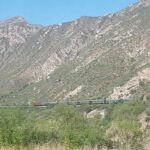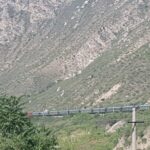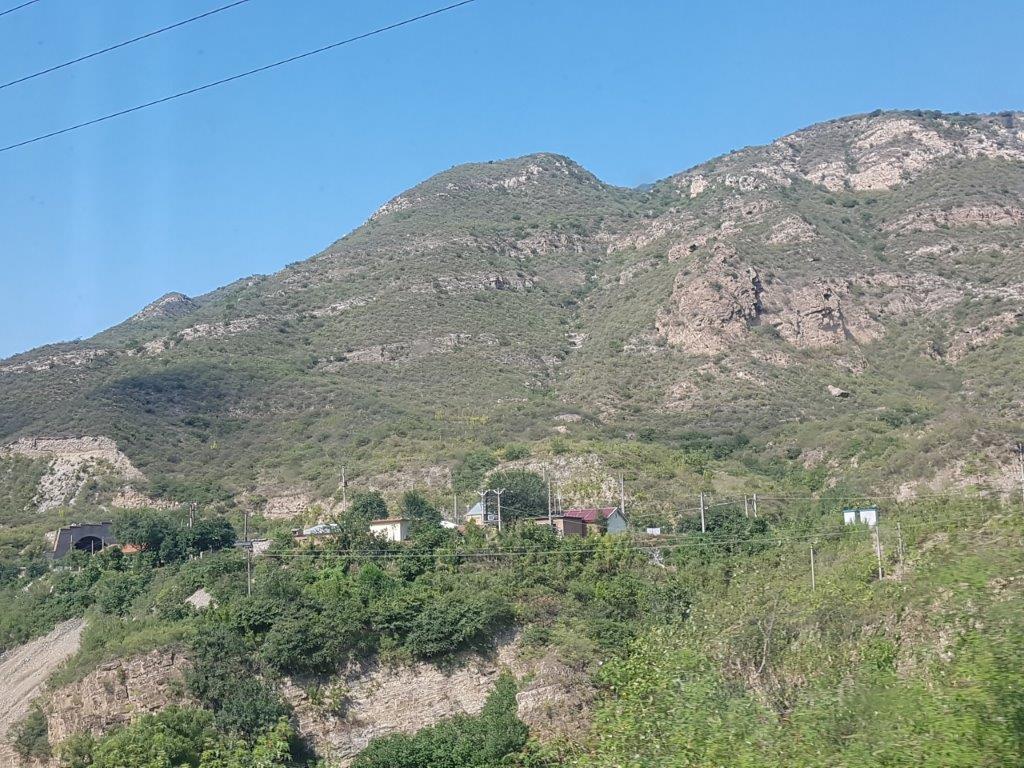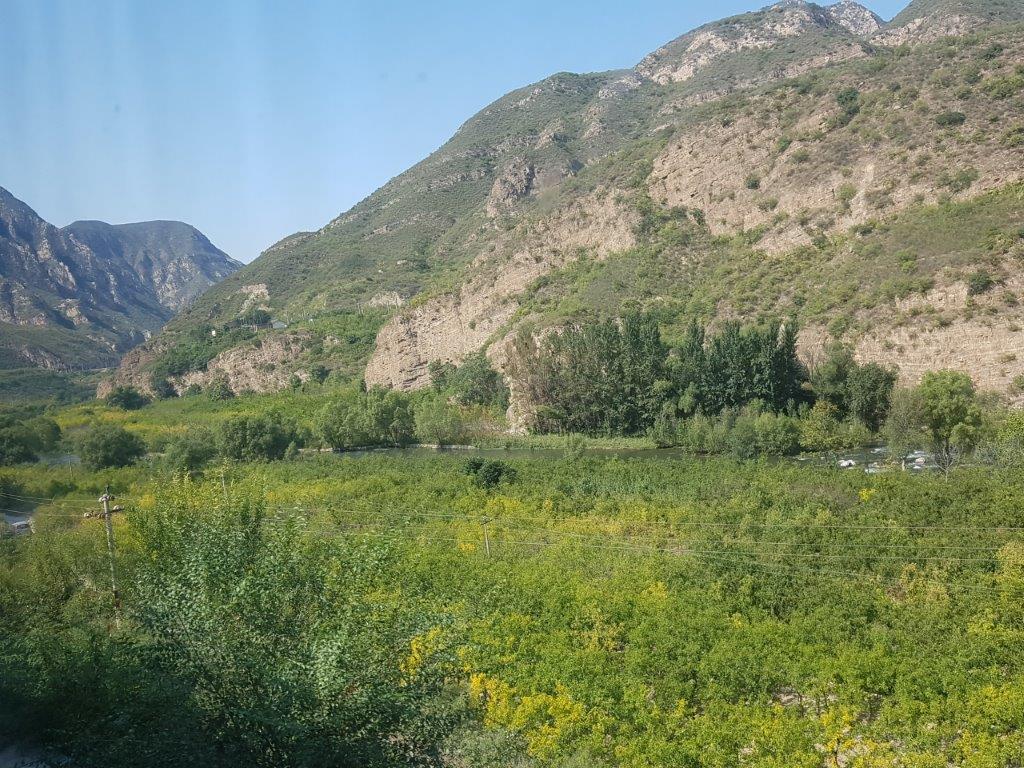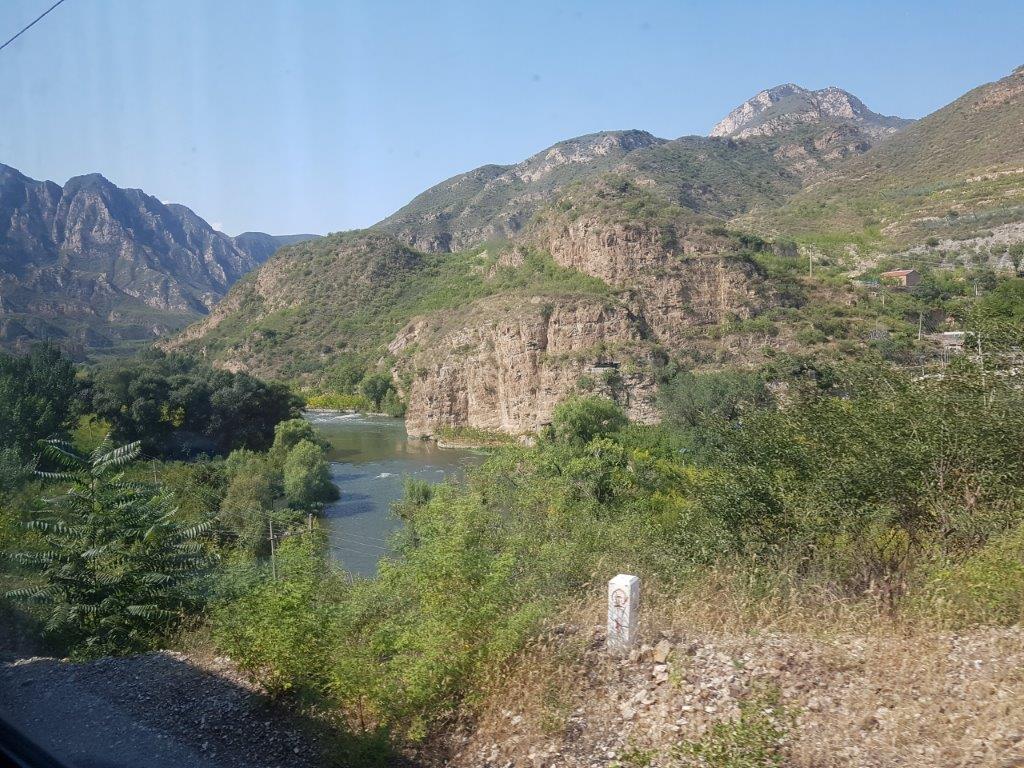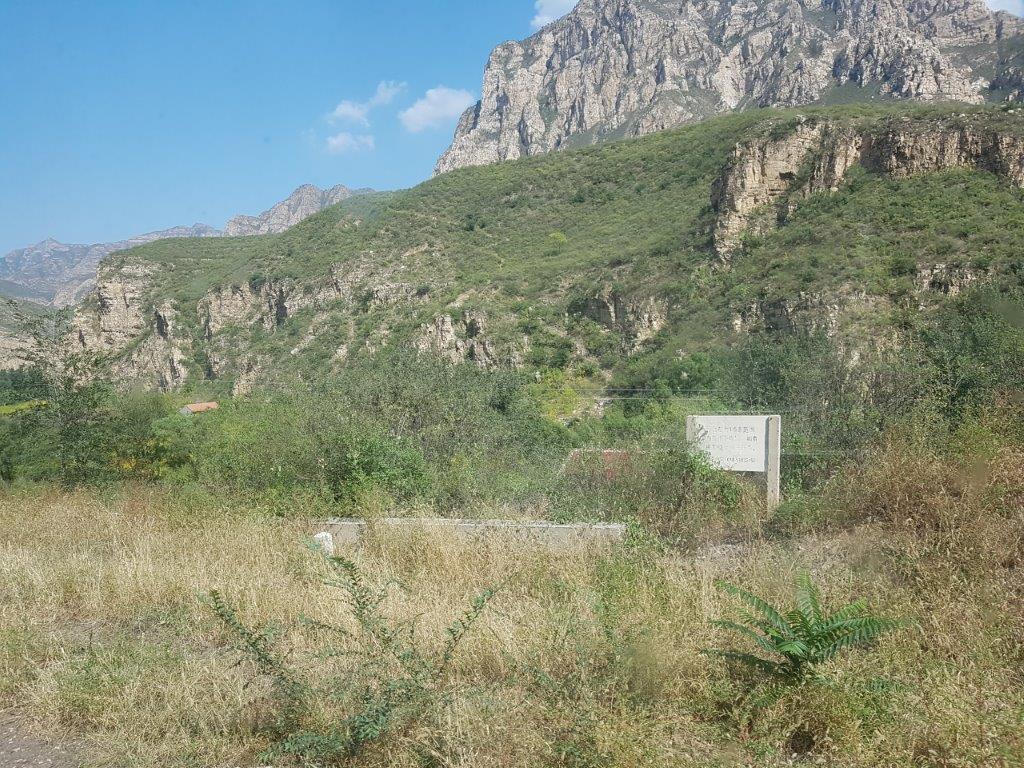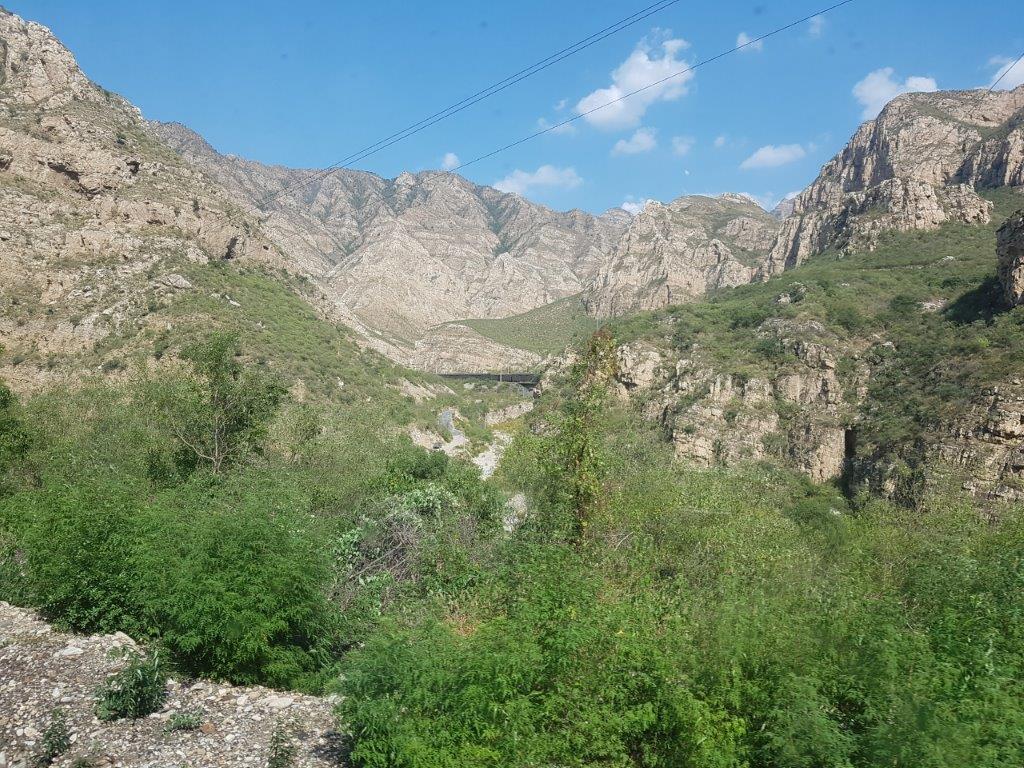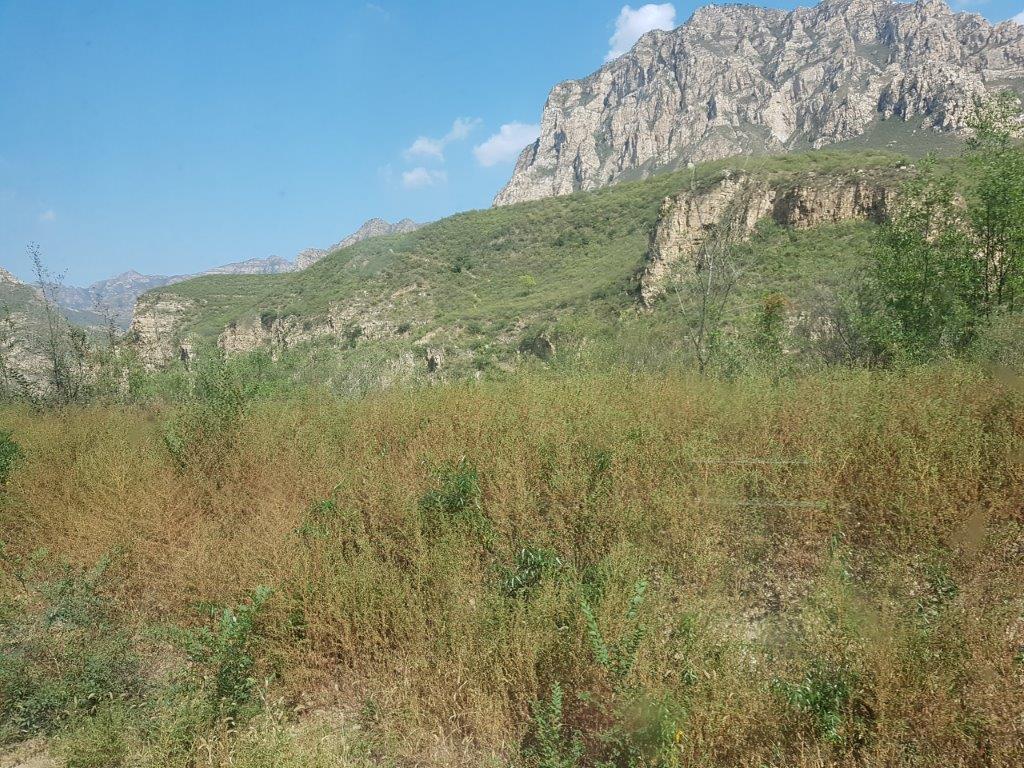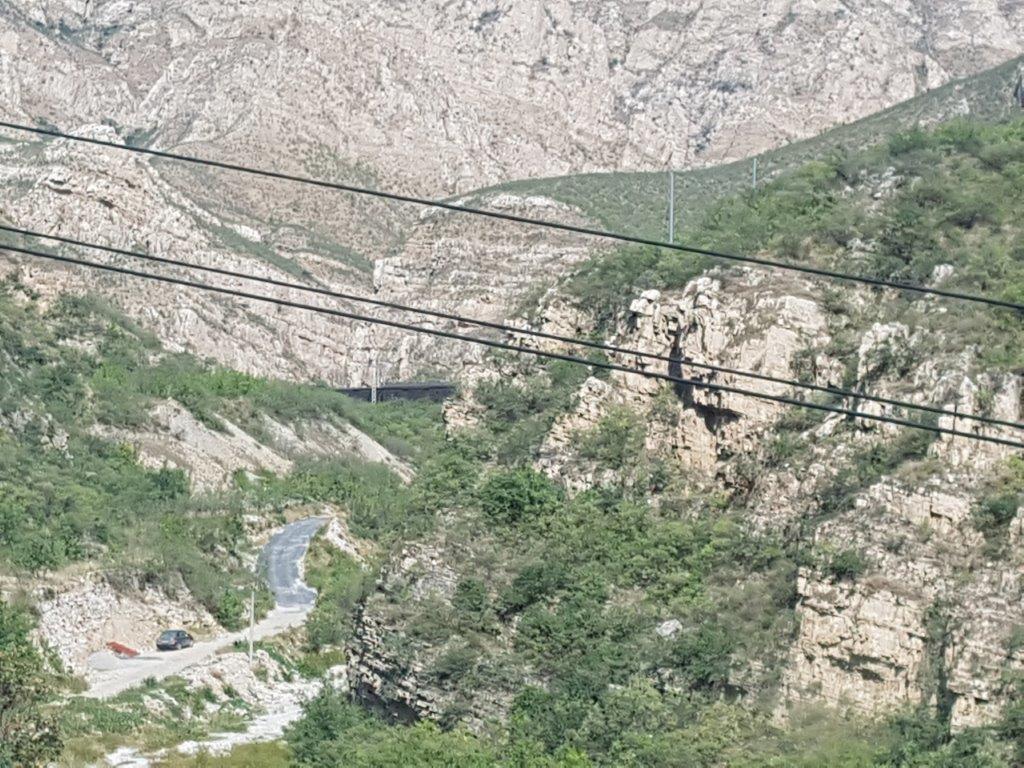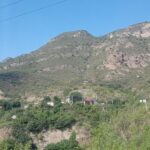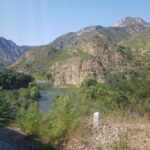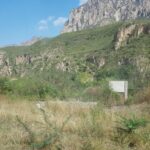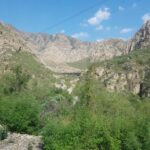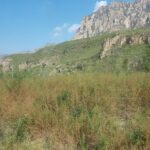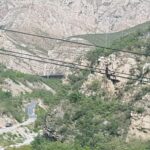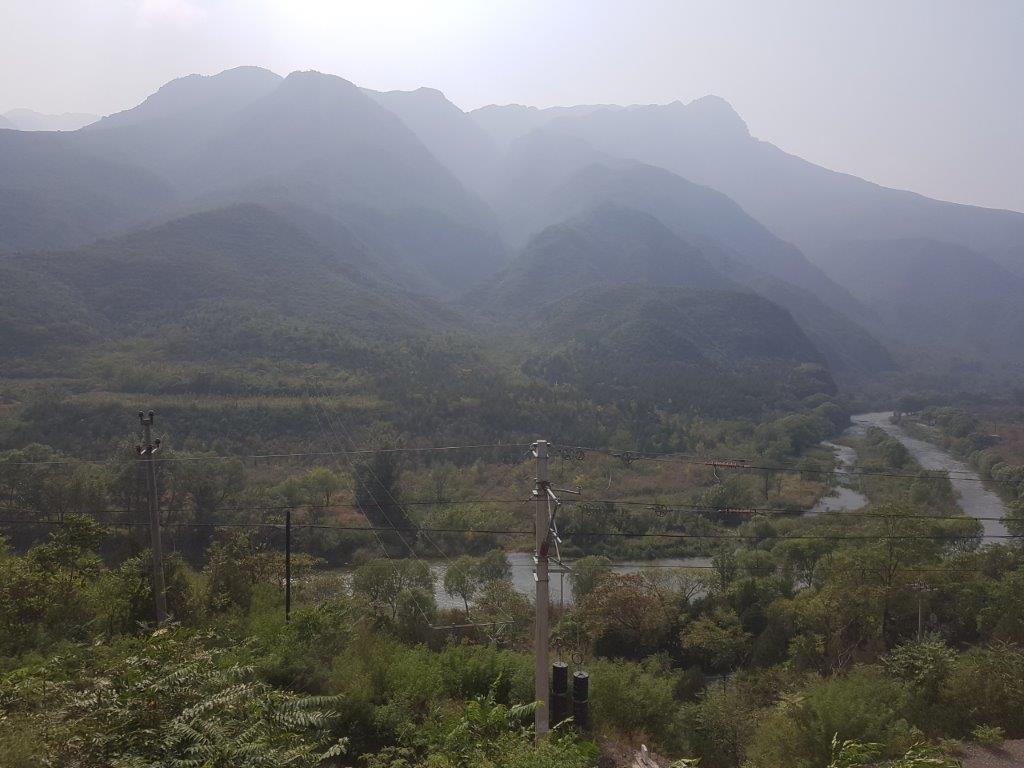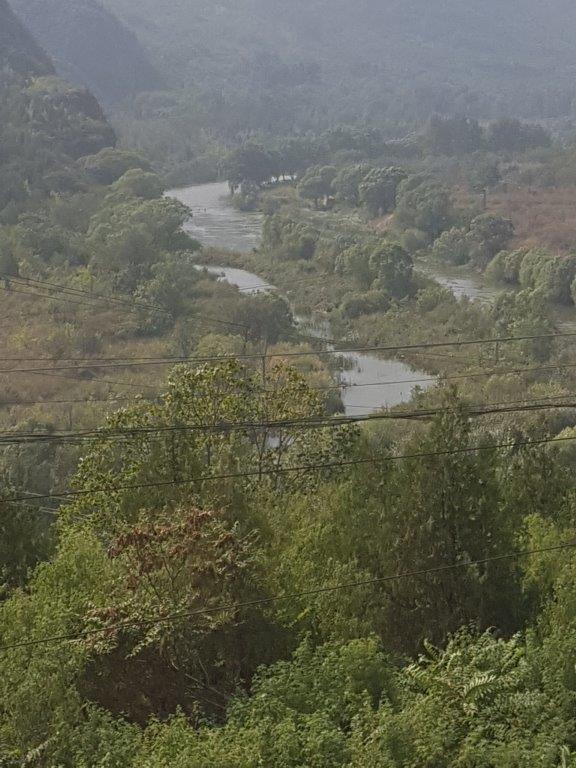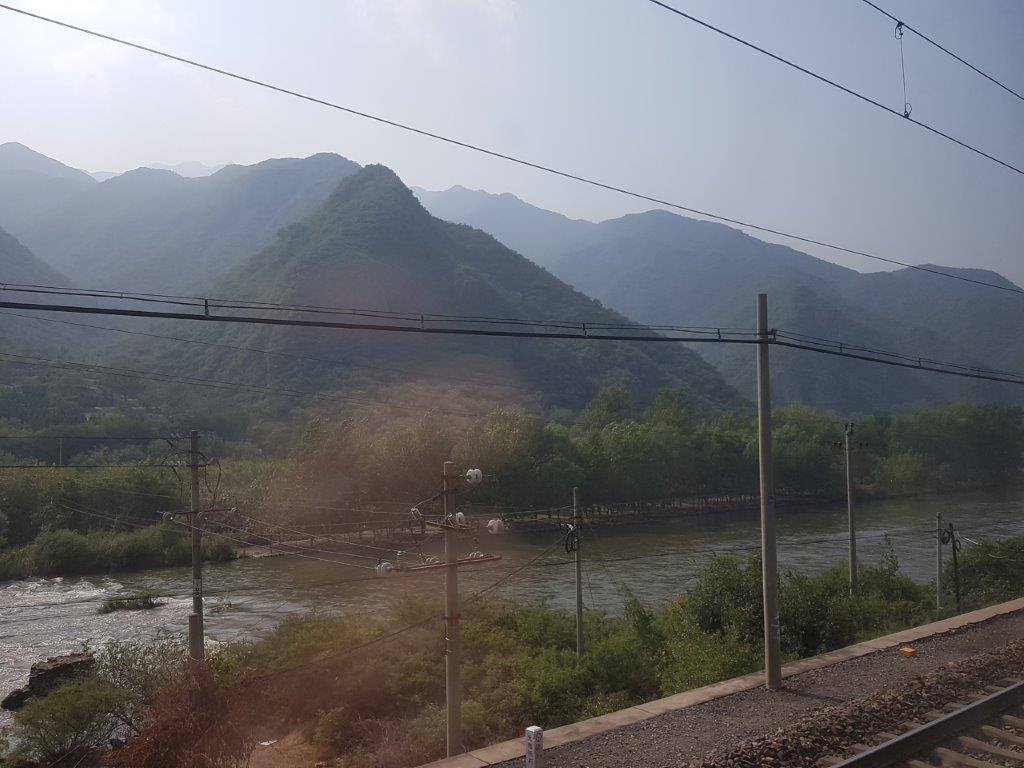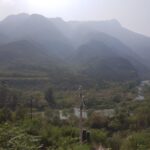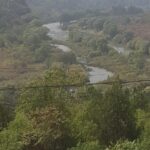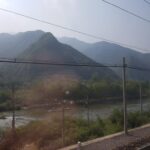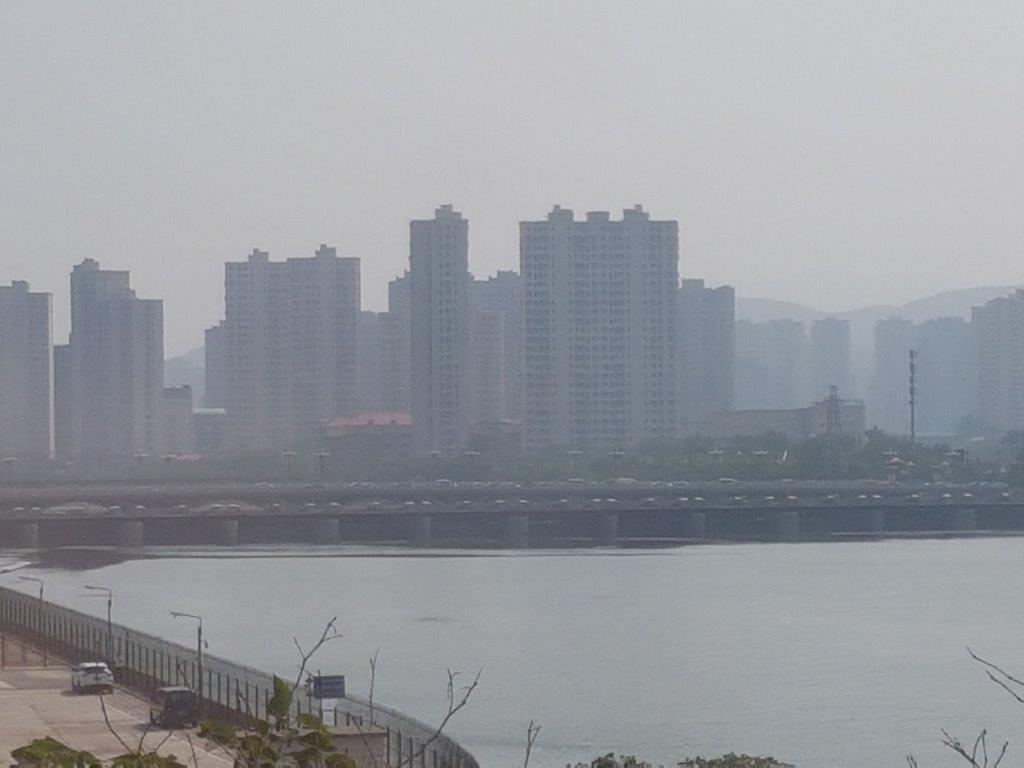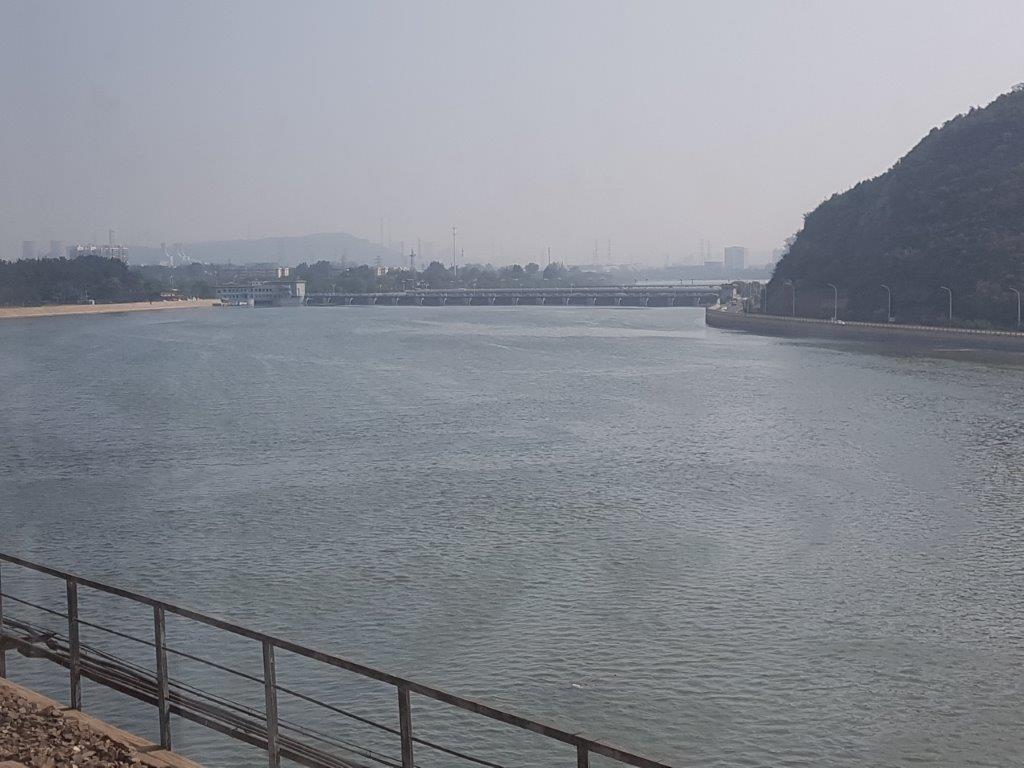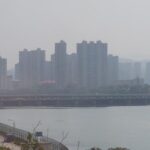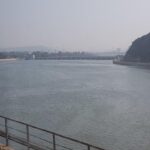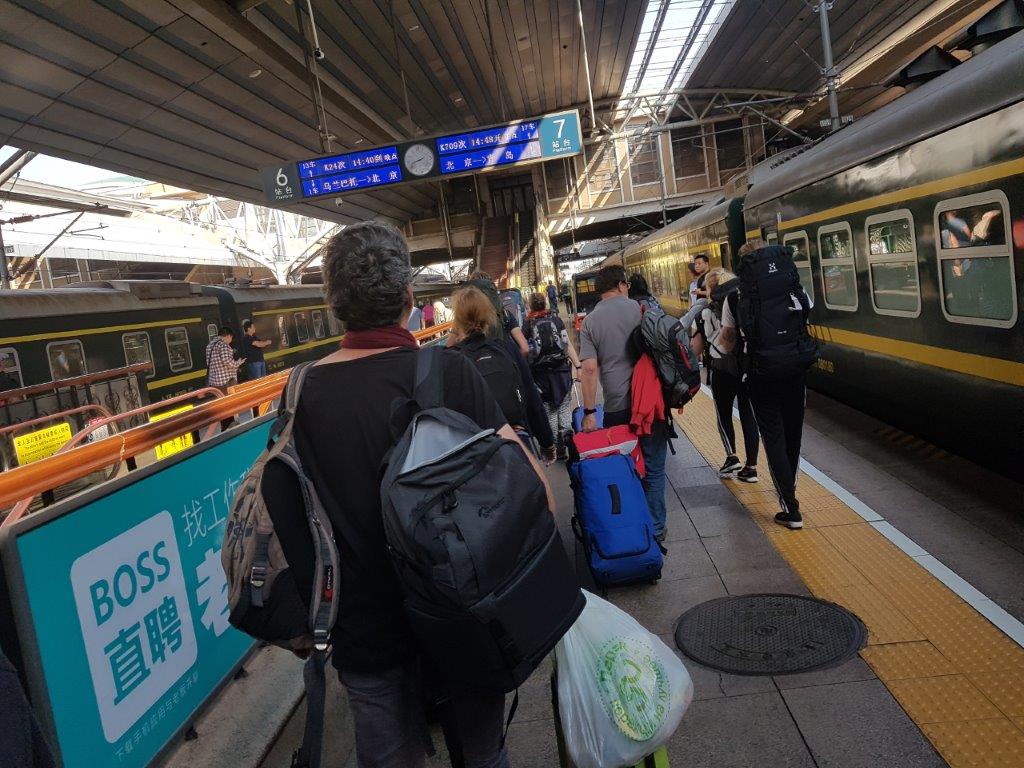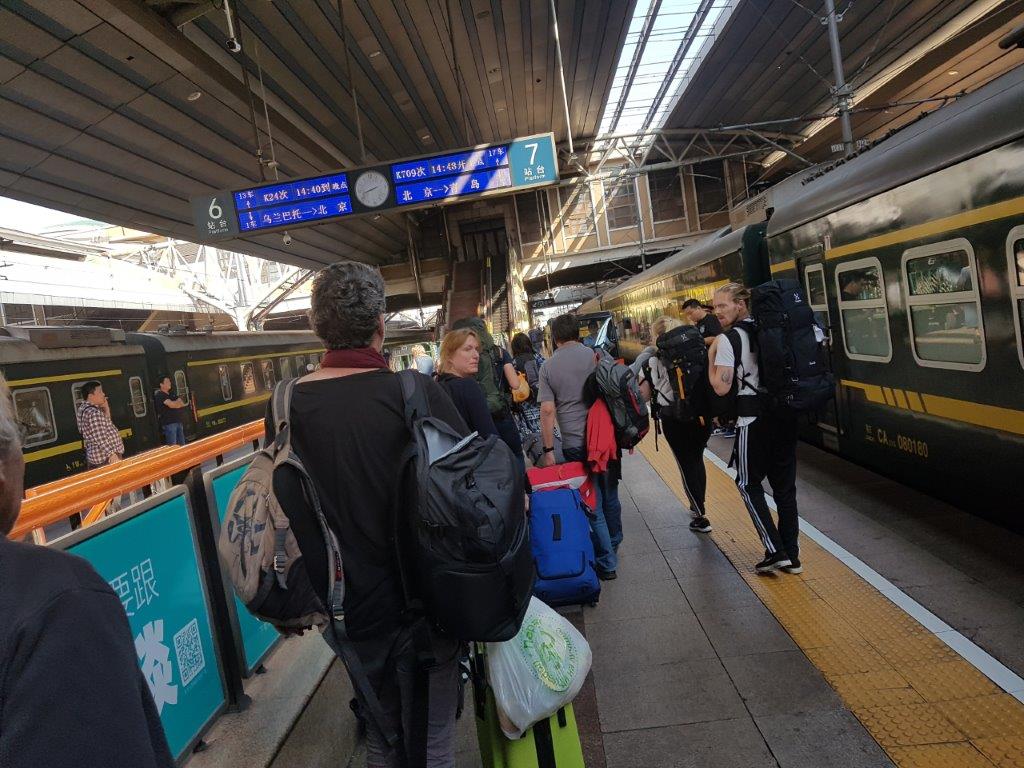Trans Mongolian Express to Beijing
Inner Mongolia
 All through the night as The Wandelgek slept, the train went through the Chinese province of Inner Mongolia. In the morning after The Wandelgek had woken up, which was at about 8.30, he was already in the province of Shanxi. Chinese provinces, even the relatively small ones, tend to be large but Inner Mongolia is the third largest, after Xinjiang and Xizhang (Tibet).
All through the night as The Wandelgek slept, the train went through the Chinese province of Inner Mongolia. In the morning after The Wandelgek had woken up, which was at about 8.30, he was already in the province of Shanxi. Chinese provinces, even the relatively small ones, tend to be large but Inner Mongolia is the third largest, after Xinjiang and Xizhang (Tibet).
Inner Mongolia, officially the Inner Mongolia Autonomous Region, is a landlocked autonomous region of the People’s Republic of China. Its border includes most of the length of China’s border with the country of Mongolia. Inner Mongolia also accounts for a small section of China’s border with Russia (Zabaykalsky Krai). Its capital is Hohhot; other major cities include Baotou, Chifeng, Tongliao and Ordos. The Autonomous Region was established in 1947. The Gobi desert is partly located in Inner Mongolia.
Passing through The Wandelgek saw a bit of small villages….
…but mainly agricultural land, which was a definite sign that the Gobi desert left behind. The Gobi is an expanding desert and it expands mainly south, deeper into China. This process is called desertification and the Chinese government tries to stop and has had some recent successes in doing so, this desertification by planting lots of trees in areas south of the Gobi.
After morning coffee, while standing in the train corridor, discussing travels, history, economics and politics with some other travellers, The Wandelgek noticed the train making another sharp bend which allowed spectators to look at the tail of the very long train…
Then the train reached the 1st large town in China which was Datong in the province of Shanxi…
Shanxi
 Shanxi is a landlocked province of the People’s Republic of China and is part of the North China region. The capital and largest city of the province is Taiyuan, while its next most populated prefecture-level cities are Changzhi and Datong.
Shanxi is a landlocked province of the People’s Republic of China and is part of the North China region. The capital and largest city of the province is Taiyuan, while its next most populated prefecture-level cities are Changzhi and Datong.
The name Shanxi means “West of the Mountains”, a reference to the province’s location west of the Taihang Mountains. Shanxi borders Hebei to the east, Henan to the south, Shaanxi to the west and Inner Mongolia to the north.
Datong Railway Station (8.40)
Datong is quite a large town and has good railway connections with Beijing, but also with other parts of the country. It is also interesting for tourists because of the old town center and its vicinity to the Great Wall.
The trainstop at Datong was a very brief one, so travellers were not allowed to leave the train, to buy something at a shop or for a quick smoke. The provodnitsas made it very clear that the train would leave really quickly. This was not the 1st train journey that The Wandelgek made in China and he knew that the provodnitsas on this international train were very special for China. On normal local trains China does not have a provodnitsa, which is a custom of the countries of the old Soviet Union.

There were multiple platforms in Datong…
I was intrigued by the man above, walking over a platform, mainly because of the way he was dressed. This looked like the way people were dressed in the communist China of Mao Zedong. Nowasays most Chinese people I met (also on previous travels in 1999 and in 2004, do not dress like that anymore, but there was a time before that, when almost all chinese people were dressed just like that. Maybe they now were his working clothes?…
After only a few minutes, the train started to move again…
Datong

 Datong is a prefecture-level city in northern Shanxi Province in the People’s Republic of China. It is located in the Datong Basin at an elevation of 1,040 metres (3,410 ft) and borders Inner Mongolia to the north and west and Hebei to the east. As of the 2020 census, it had a population of 3,105,591 of whom 1,790,452 lived in the built-up (or metro) area made of the 2 out 4 urban districts of Pingcheng and Yungang as Yunzhou and Xinrong are not conurbated yet.
Datong is a prefecture-level city in northern Shanxi Province in the People’s Republic of China. It is located in the Datong Basin at an elevation of 1,040 metres (3,410 ft) and borders Inner Mongolia to the north and west and Hebei to the east. As of the 2020 census, it had a population of 3,105,591 of whom 1,790,452 lived in the built-up (or metro) area made of the 2 out 4 urban districts of Pingcheng and Yungang as Yunzhou and Xinrong are not conurbated yet.
Next the train crossed the Yuhexi Ganqu (Yuhe river)..
From Datong the train goes slightly noth east into Hebei and towards Zhāngjiākǒu and then south east to Beijing. This is a new upgraded section of the railroad, where trains can drive with higher speed. It does mean that the older section passed Badaling and the Great Wall is ignored.
Hebei
 Hebei is a coastal province of the People’s Republic of China, and is part of the North China region. The modern province was established in 1911 as Chihli Province (Zhili Province). Its capital and largest city is Shijiazhuang. Its one-character abbreviation is “冀” (Jì), named after Ji Province, a Han dynasty province (zhou) that included what is now southern Hebei. The name Hebei literally means “north of the river”, referring to its location entirely to the north of the Yellow River.
Hebei is a coastal province of the People’s Republic of China, and is part of the North China region. The modern province was established in 1911 as Chihli Province (Zhili Province). Its capital and largest city is Shijiazhuang. Its one-character abbreviation is “冀” (Jì), named after Ji Province, a Han dynasty province (zhou) that included what is now southern Hebei. The name Hebei literally means “north of the river”, referring to its location entirely to the north of the Yellow River.
The province was one of the first regions in China where civilization developed.
Since Beijing and its surrounding regions were often chosen as the capital, Hebei has served an important role of containing and protecting the city since the Jin dynasty. The Great Wall of China cuts through northern Hebei from east to west as well, briefly entering the border of Beijing Municipality, and terminates at the seacoast of Shanhaiguan in northeastern Hebei.
The train enters the …
Yan mountains
The Yan Mountains, also known by their Chinese name Yanshan, are a major mountain range to the north of the North China Plain, principally in the province of Hebei.
The range rises between the Chaobai River on the west and the Shanhai Pass on the east. It is made up mostly of limestone, granite, and basalt. Its altitude ranges from 400 to 1000 meters.
The main peak, Mount Wuling, is 2,116 meters (6,942 ft) above sea level and is located in Xinglong County in Hebei. The range contains many narrow passes, such as the Gubei Pass, the Xifeng Pass, and the Leng Pass. The eastern stretch of the Great Wall of China, including Badaling and Mutianyu in northern Beijing, can be found in the Yan Mountains. The mountains are also an important traffic gateway between north and south.
The Trans-Mongolian Express is going through many tunnels and this makes the journey quite interesting because after each tunnel the view has changed. The 1st pic below is me trying to make a picture but the autoflash’s reflection is ruïning the pic ??. The 2nd pic is me in a reflection of the window, but I learned and eliminated the autoflash ??
The Chinese built some remarkable bridge constructions and road constructions in these mountains so trains and cars can easly get through.
These mountains look quite steep and rocky, so to prevent rockfall from destroying roads or rail tracks, some protective measurements were taken…
There’s a lot of traffic going through the mountains to the north or to Beijing. Here The Wandelgek spotted another train on the other side of the valley…
Making all these photographs and some movies too, meant that batteries ran low soon, but in the cabin was an electricty socket which was way better than only one or maybe two per wagon, like the train had in Russia.
The track through the Yan Shan (Yan Mountains) is quite curvy and there are lots of tunnels.
When the train had passed the highest point rivers started flowing the other way around.
Entering Great Beijing
After some more valleys and tunnels, the Trans-Mongolian Express entered Great Beijing.
Beijing, is the capital of the People’s Republic of China. It is the world’s most populous national capital city, with over 21 million residents within an administrative area of 16,410.5 km2 (6336 sq. mi.). It is located in Northern China, and is governed as a municipality under the direct administration of the State Council with 16 urban, suburban, and rural districts. Beijing is mostly surrounded by Hebei Province with the exception of neighboring Tianjin to the southeast; together, the three divisions form the Jingjinji megalopolis and the national capital region of China.
Hutongs
The photo below shows old and new China in one. At the background loom the high appartment buildings of which there are soooo many in Beijing, in front of those you see the low traditional houses of the hutongs the traditional neighbourhoods…
The hutongs are slowly disappearing although maybe a few will survive because of tourism.
Then a significant moment occurred. The train reached:
Beijing Railway Station (15.00), final destination of the Trans-Mongolian Railway
 It was already deep in the afternoon as The Wandelgek arrived at his final destination, the Chinese capital of Beijing.
It was already deep in the afternoon as The Wandelgek arrived at his final destination, the Chinese capital of Beijing.
I’ll tell you more about Beijing in upcoming blogposts. When unboarding, The Wandelgek left his blue coat on a clothes hook in the cabin and found out when he was almost at the escalators to the main hall. He ran back to where is wagon and cabin was and luckily a railway employee had found the coat and handed it over. Pffff.
Then The Wandelgek proceeded towards the main hall and then outside, where the station building with its typical Chinese pagoda like turrets was basking in the sunlight. It was noticably hotter in Beijing than it had been in Ulaanbaatar, which is not so very strange because it is much further south…
A bus arrived to pick him up and bring him to the hotel which was quite a bit from the city center (more about that in an upcoming blogpost).
Conclusions
So this was really the end of the greatest railway journey on Earth (although it might be shorter than the one to Vladivostok or the one going through Manchuria via Harbin to Beijing, it is definitely more interesting because of Beijing, Ulaanbaatar and of course Mongolia.
It is the end of an adventure that started weeks ago in Moscow, took me through the Ural mountains deep into Siberia and to the shores of Lake Baikal. Then south into Mongolia where I did a roadtrip passed monasteries dead volcanoes and old citiy ruins from the time that Djenghis Khan ruled then through the Gobi desert to Beijing.
Travelling by railway over such a significant distance makes you much more aware of the actual size of our planet Earth. Yes it is humongously large, but then again, not neverending large. I mean there have been episodes in our human history where the Siberian Taiga or the Gobi desert were seen as neverending and as insurpassable obstacles for travellers, explorers or armies. Nowadays it is possible to cross the Gobi in a single day in an airconditioned train or cross the Taiga in a couple of days without getting dirty. It also makes you more aware that humans definitely are capable of influencing Earth’s climate.
The next part of my travels will be about my spectacular stay in Great Beijing.


